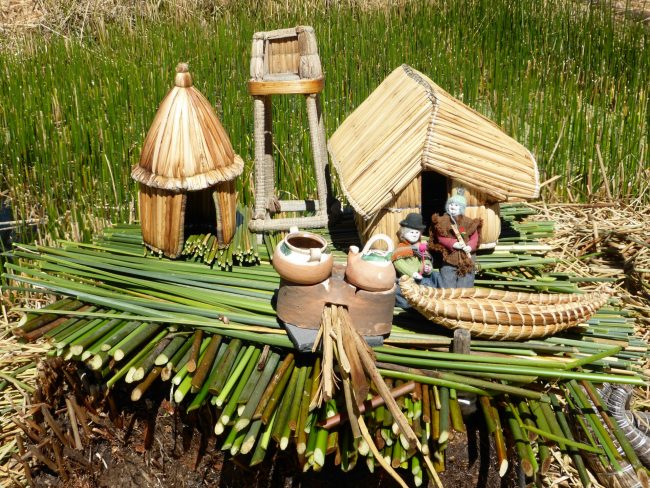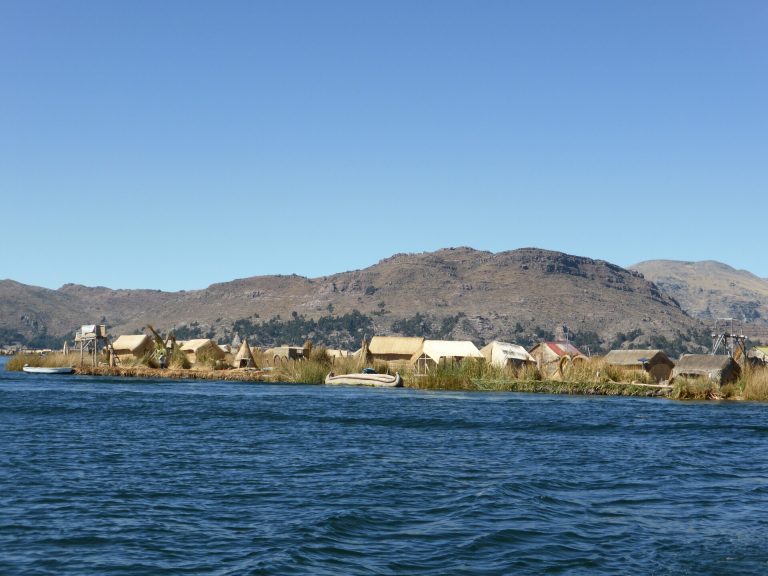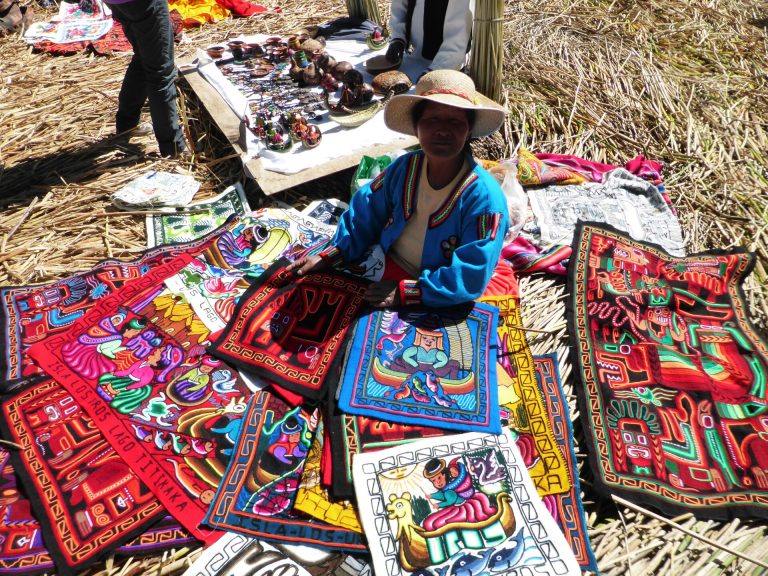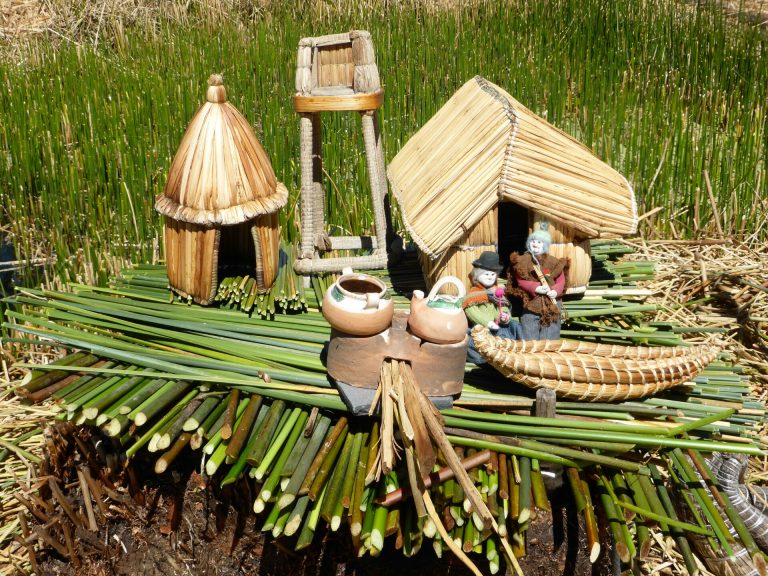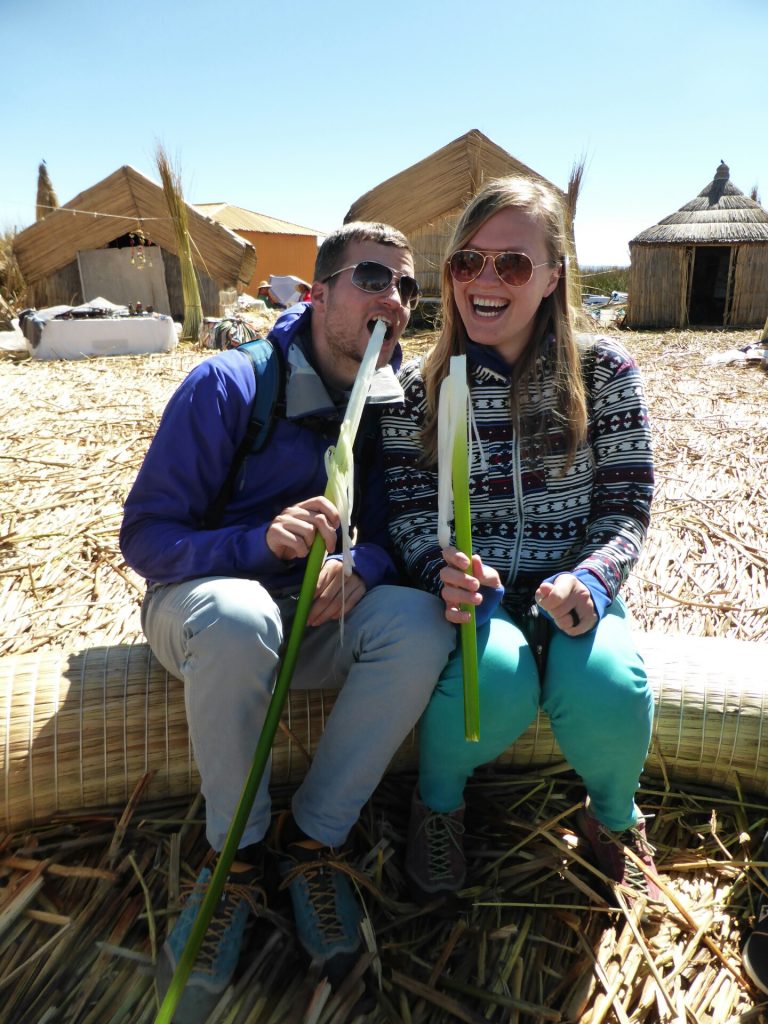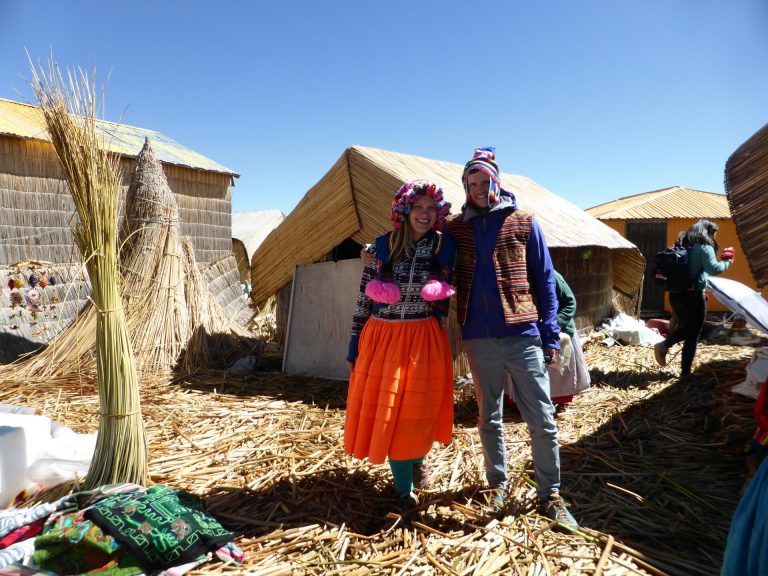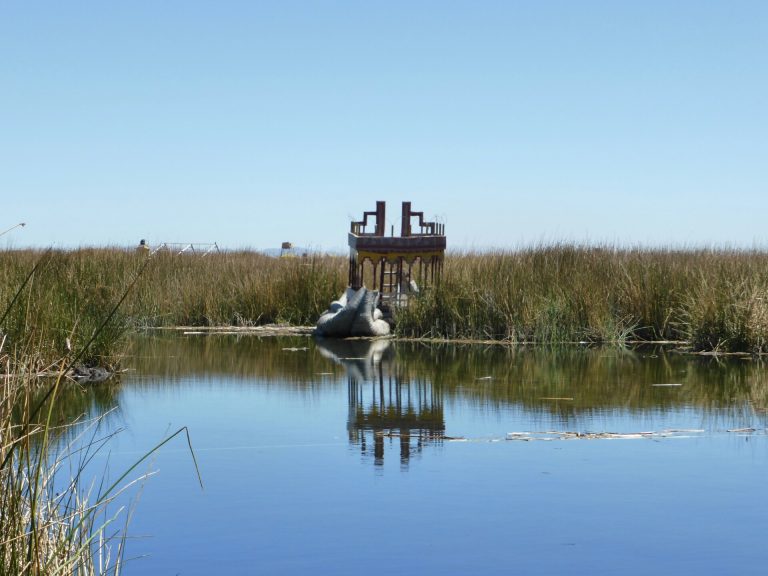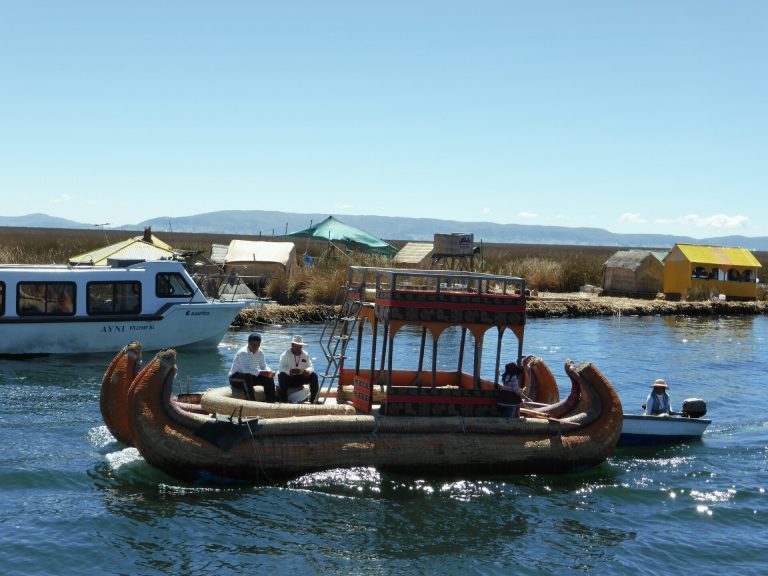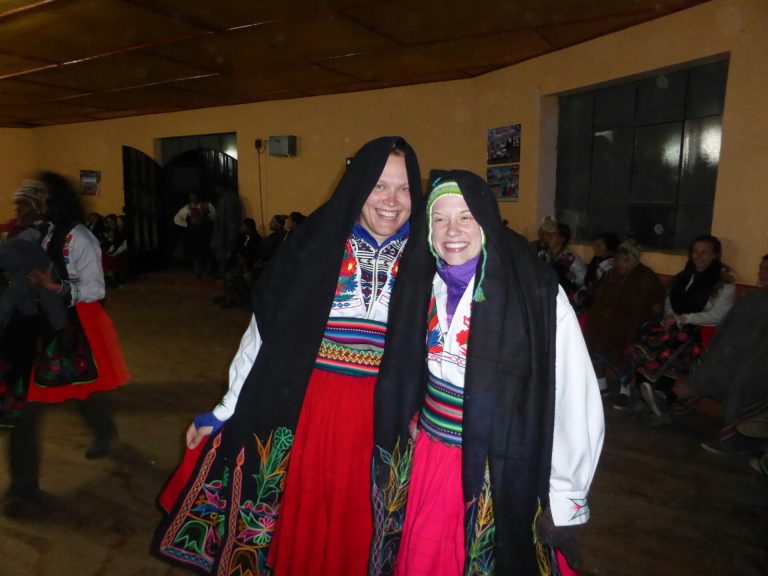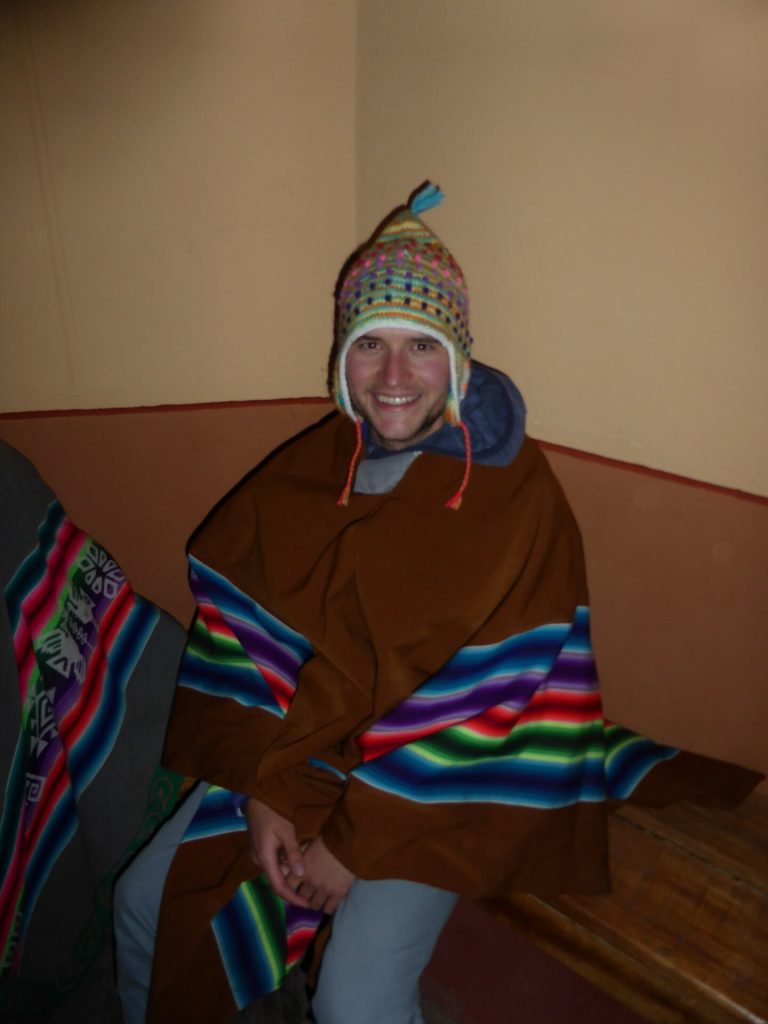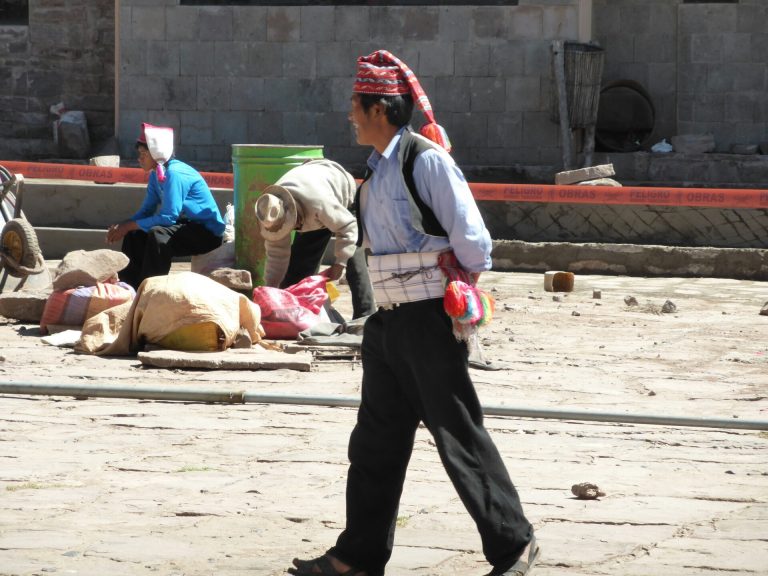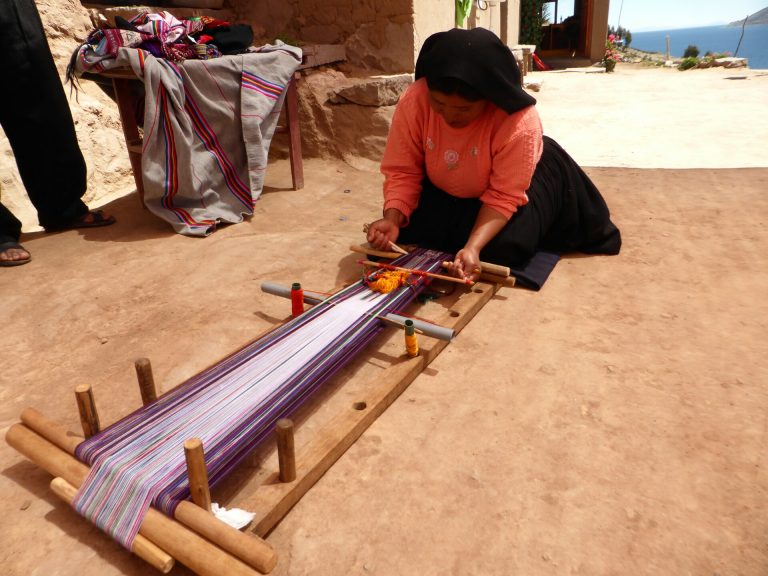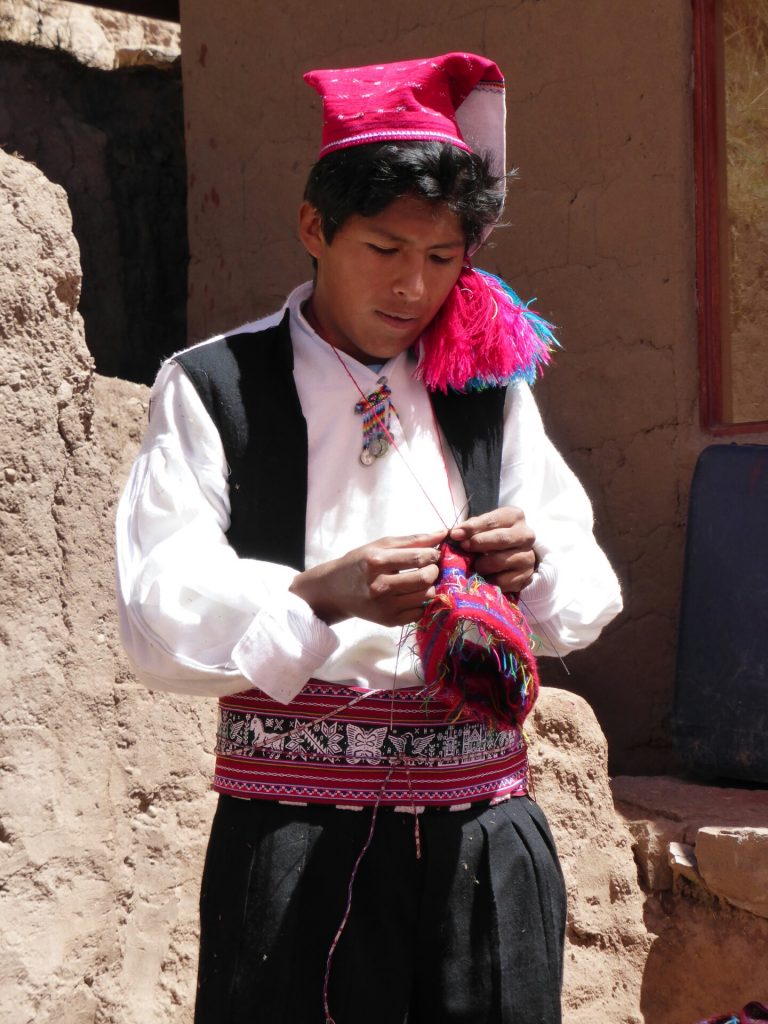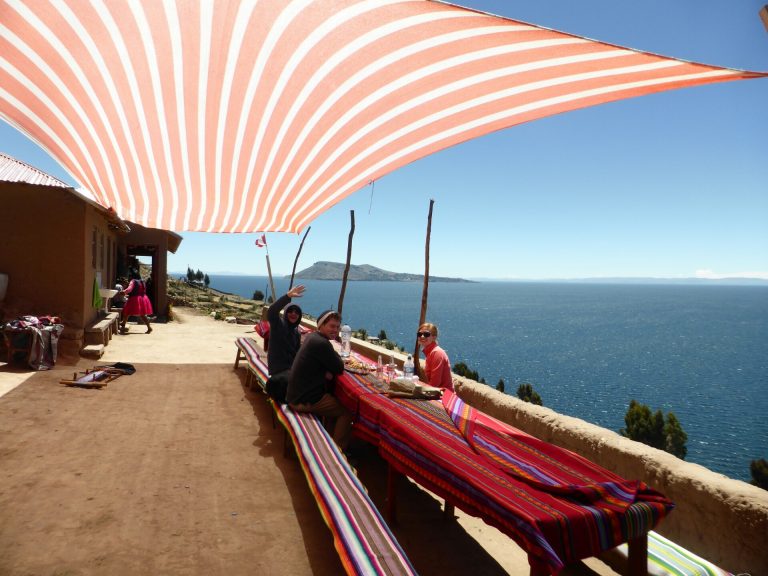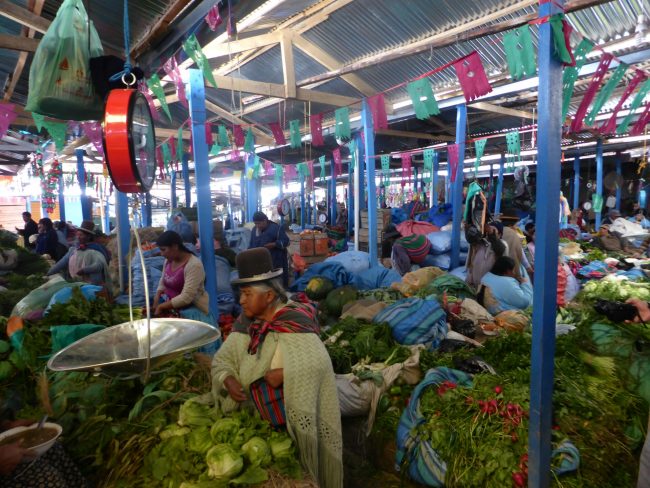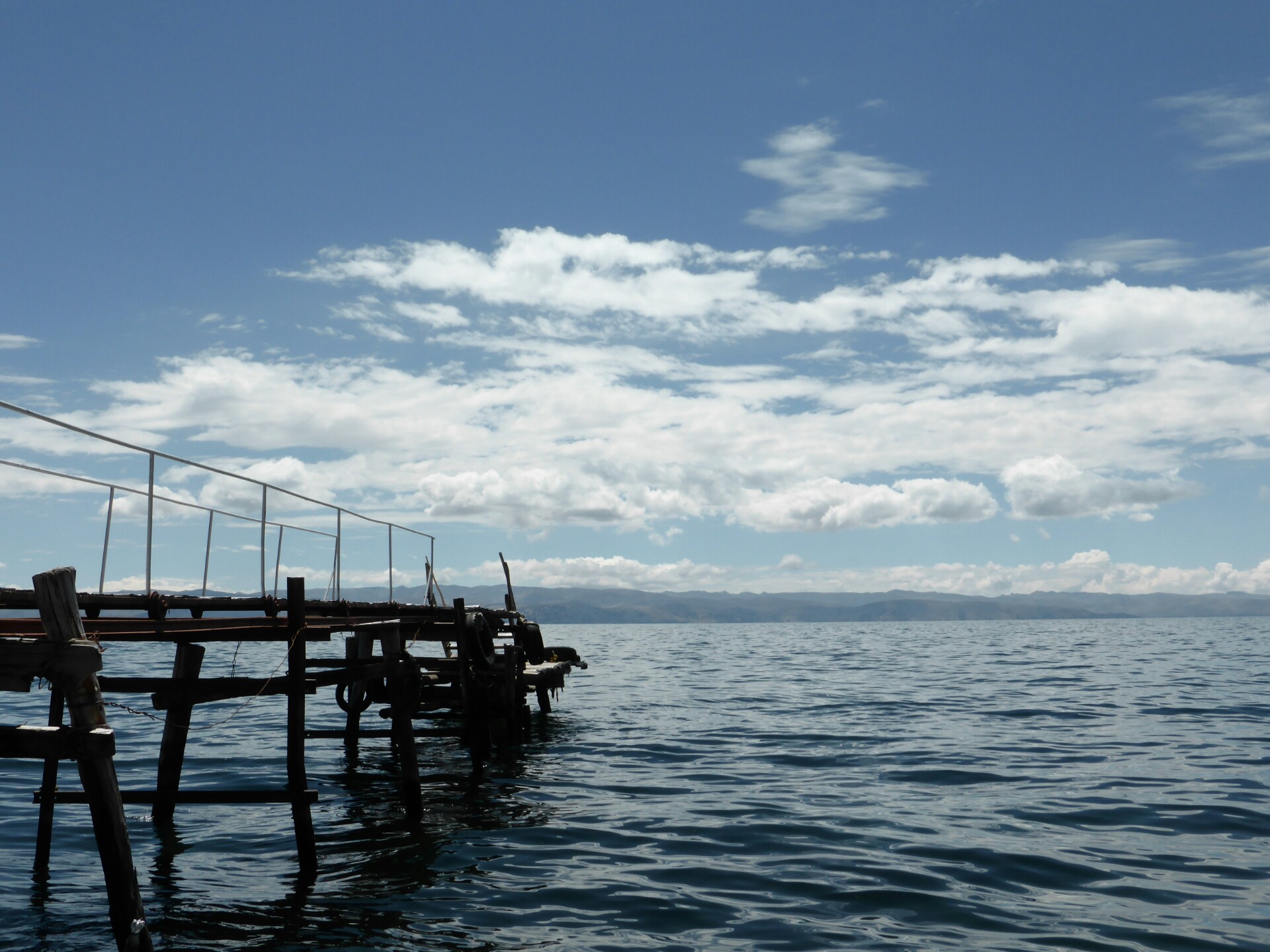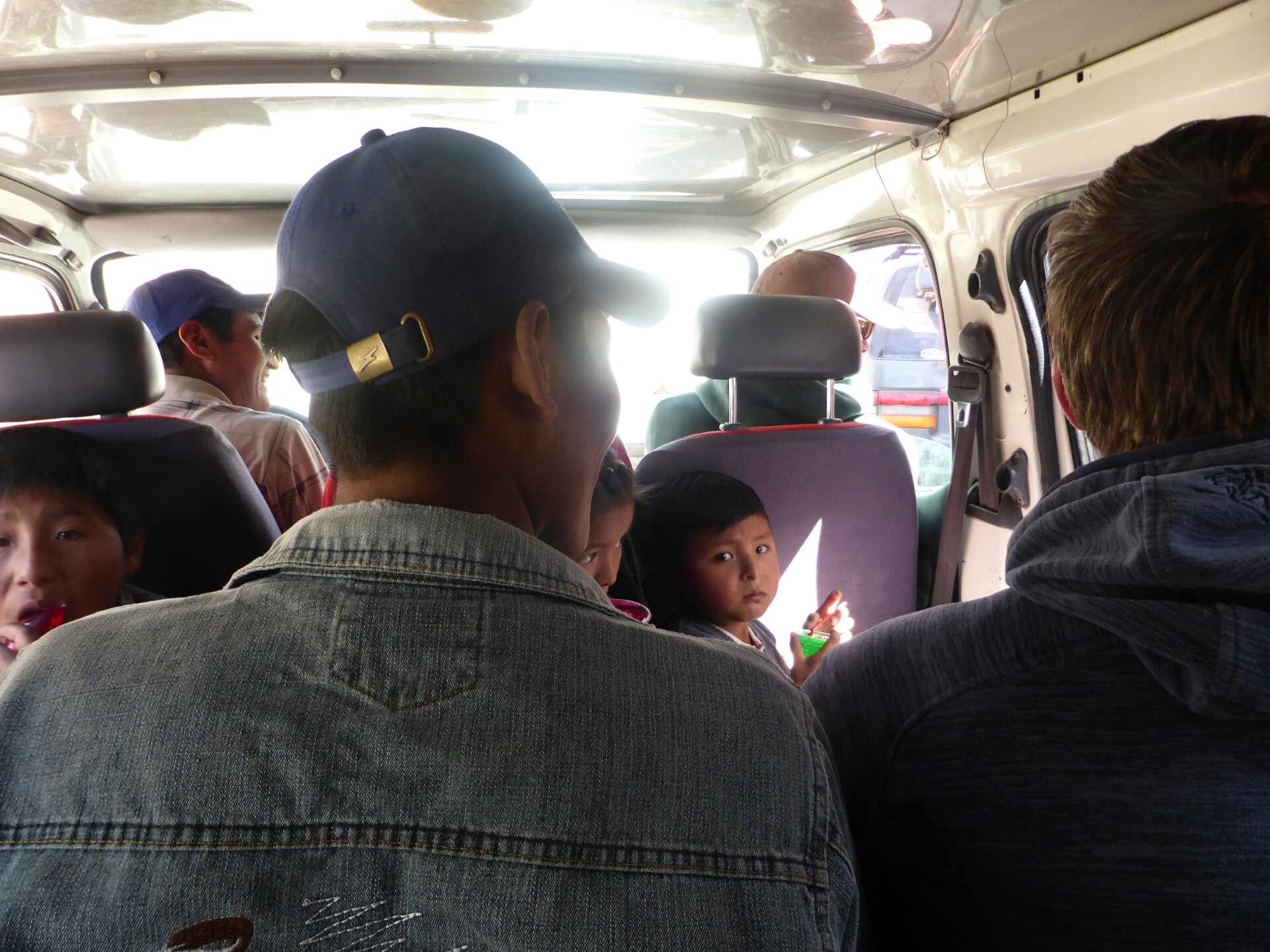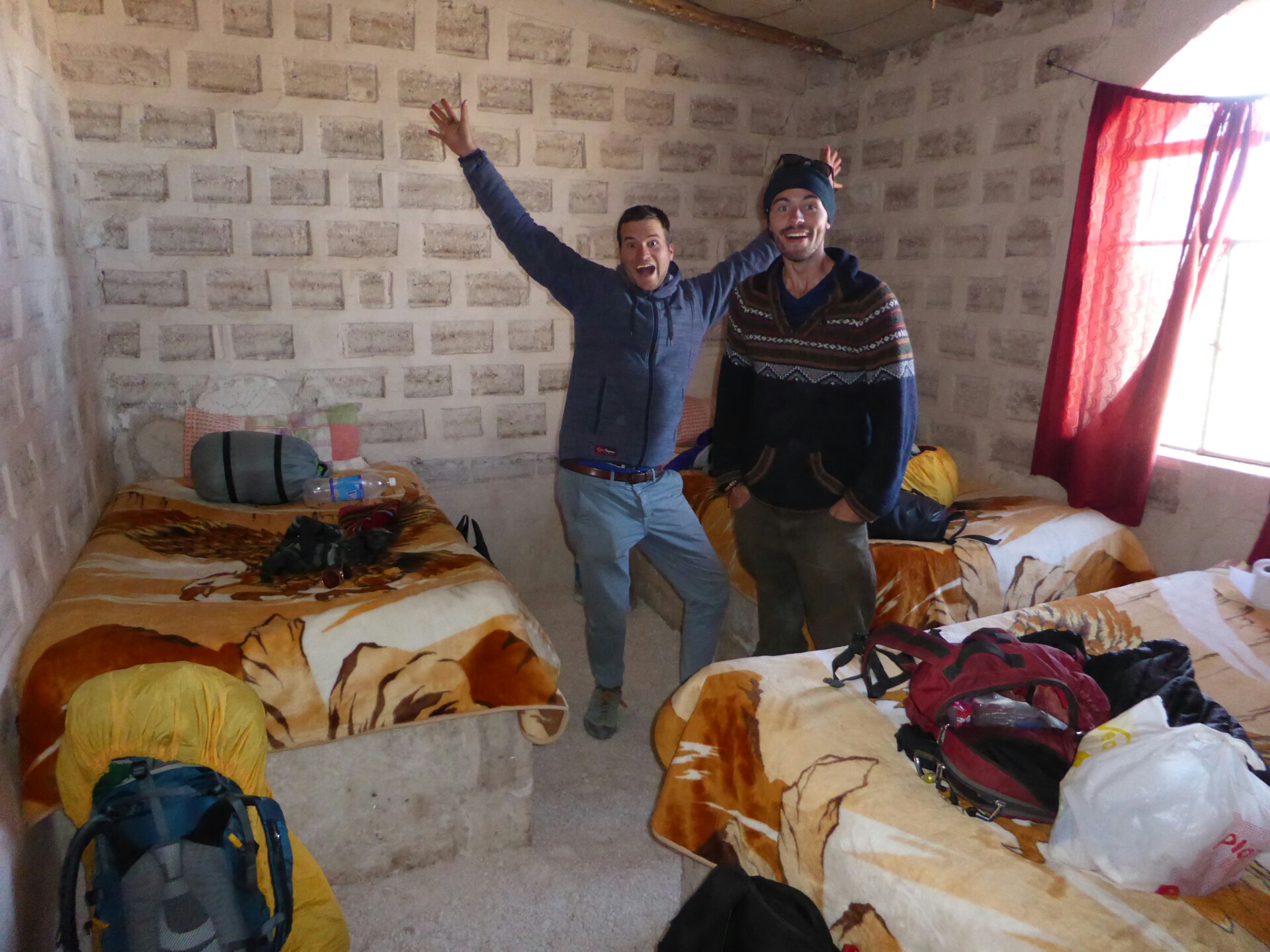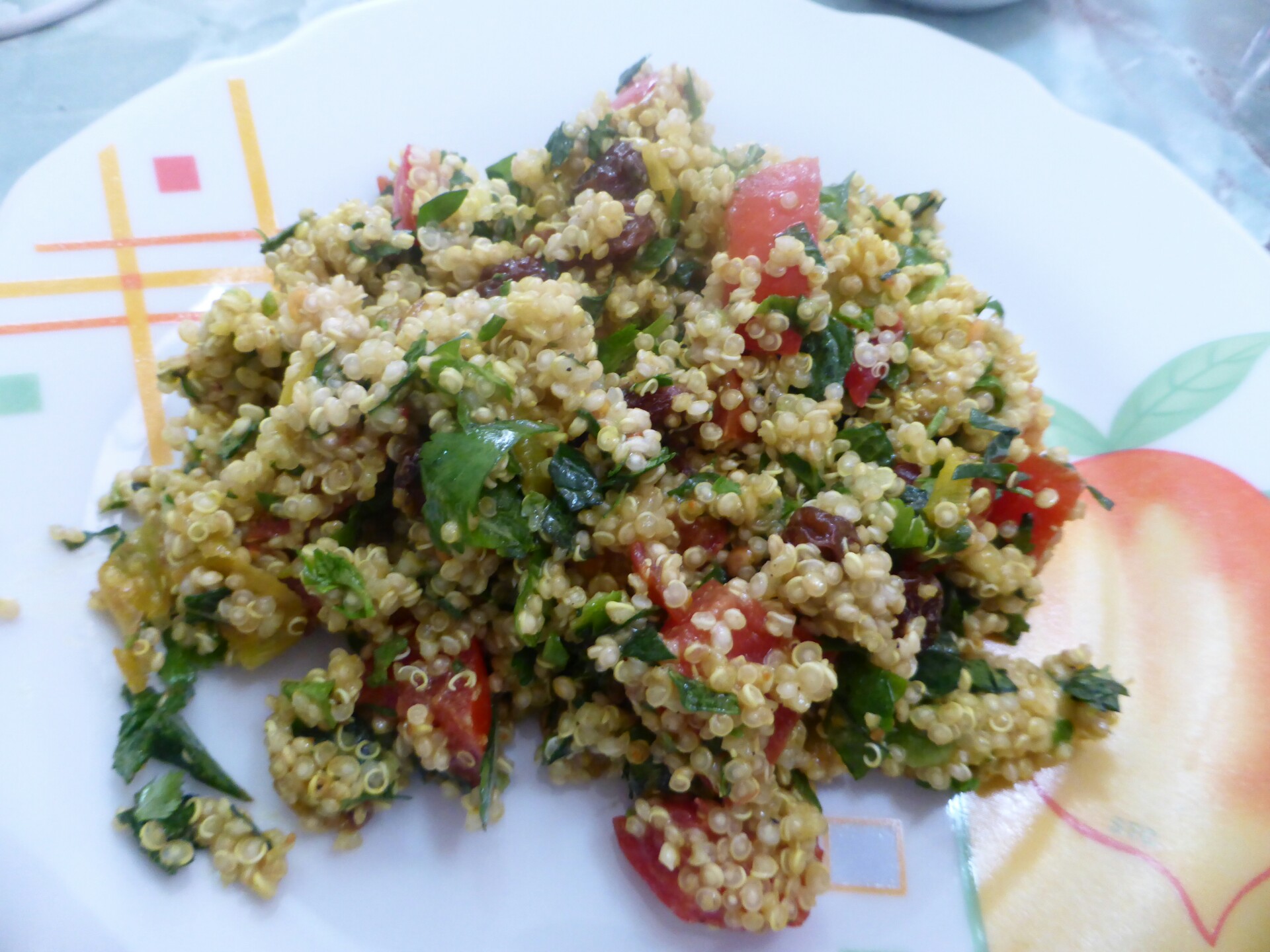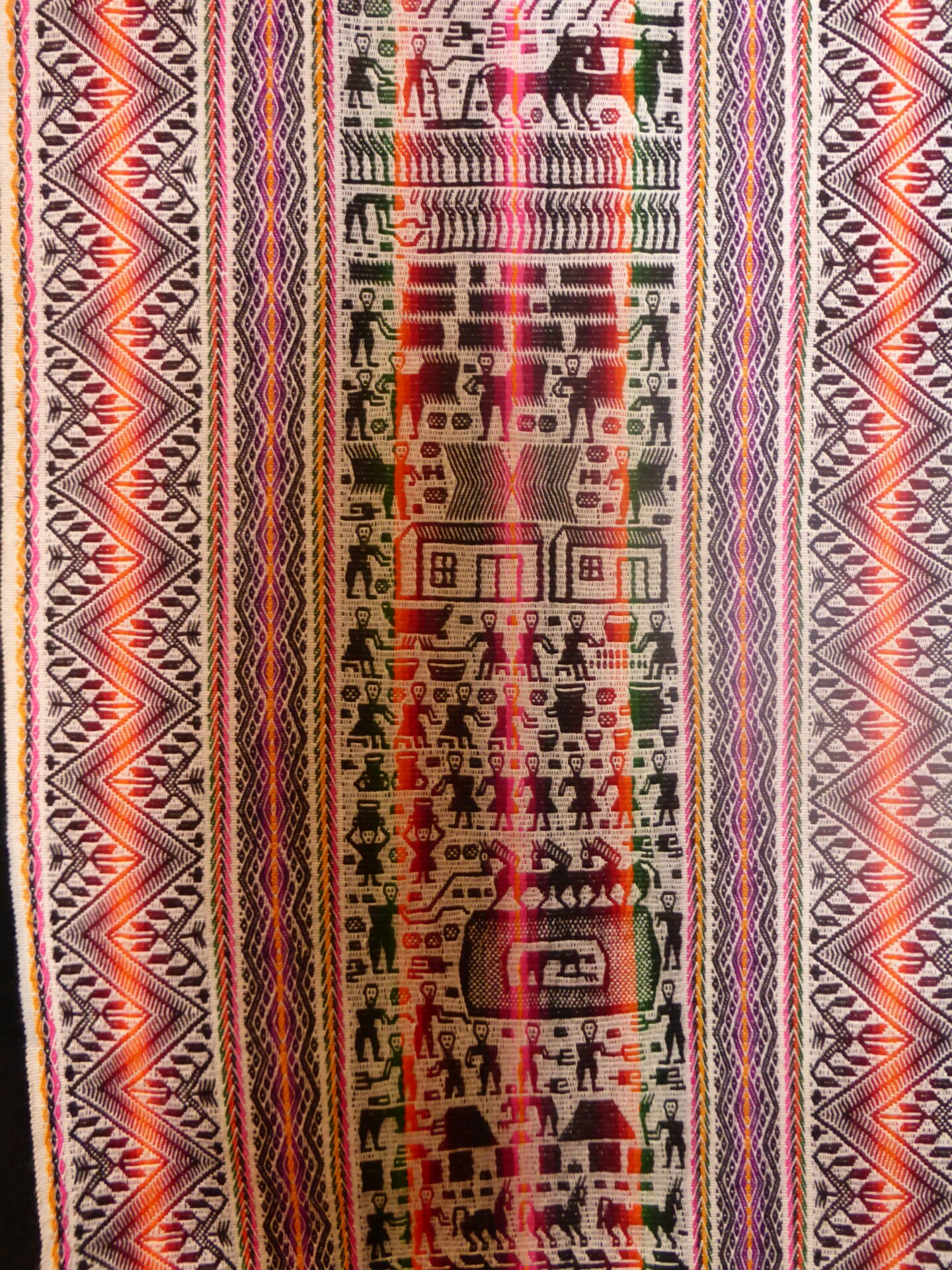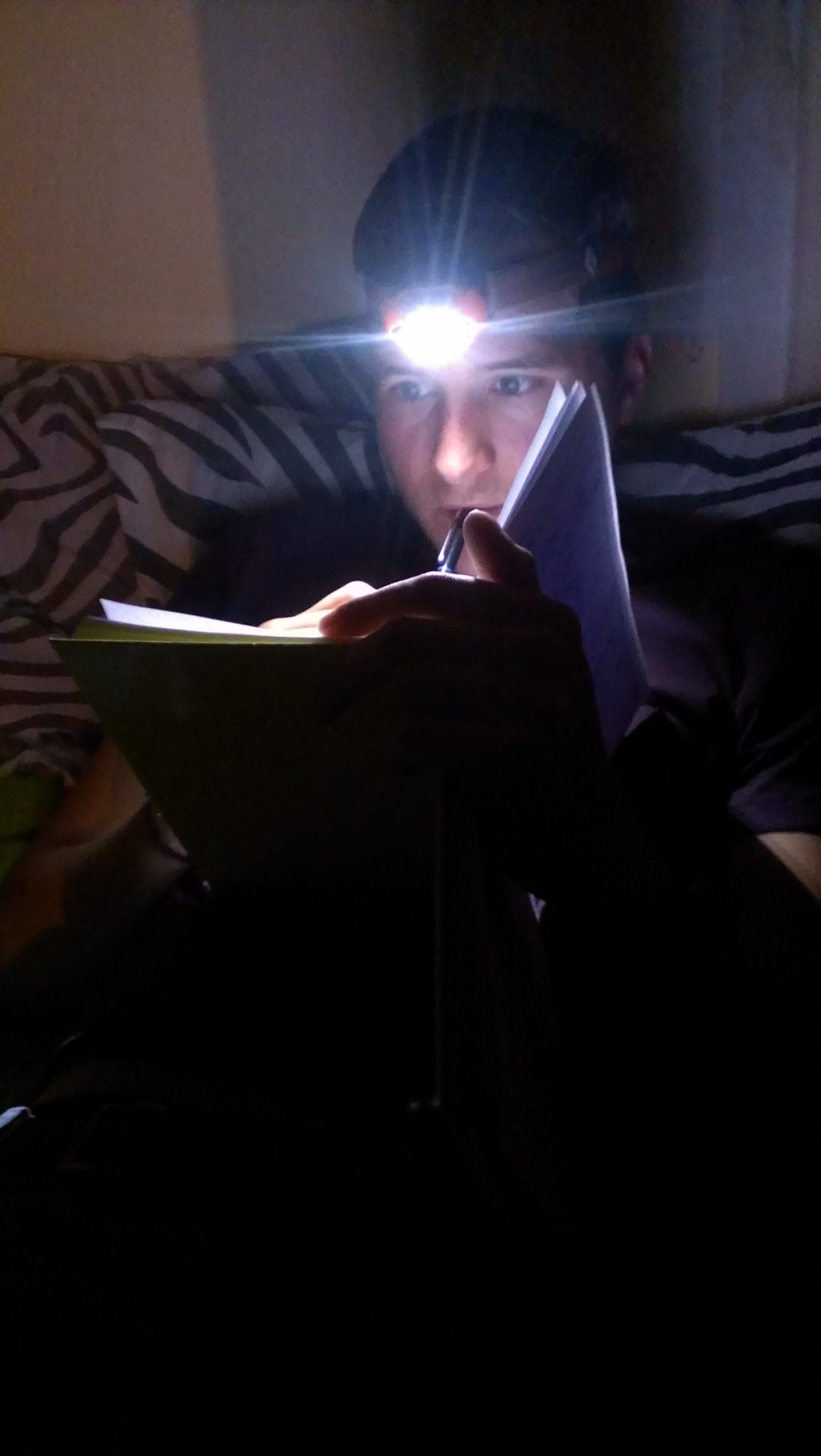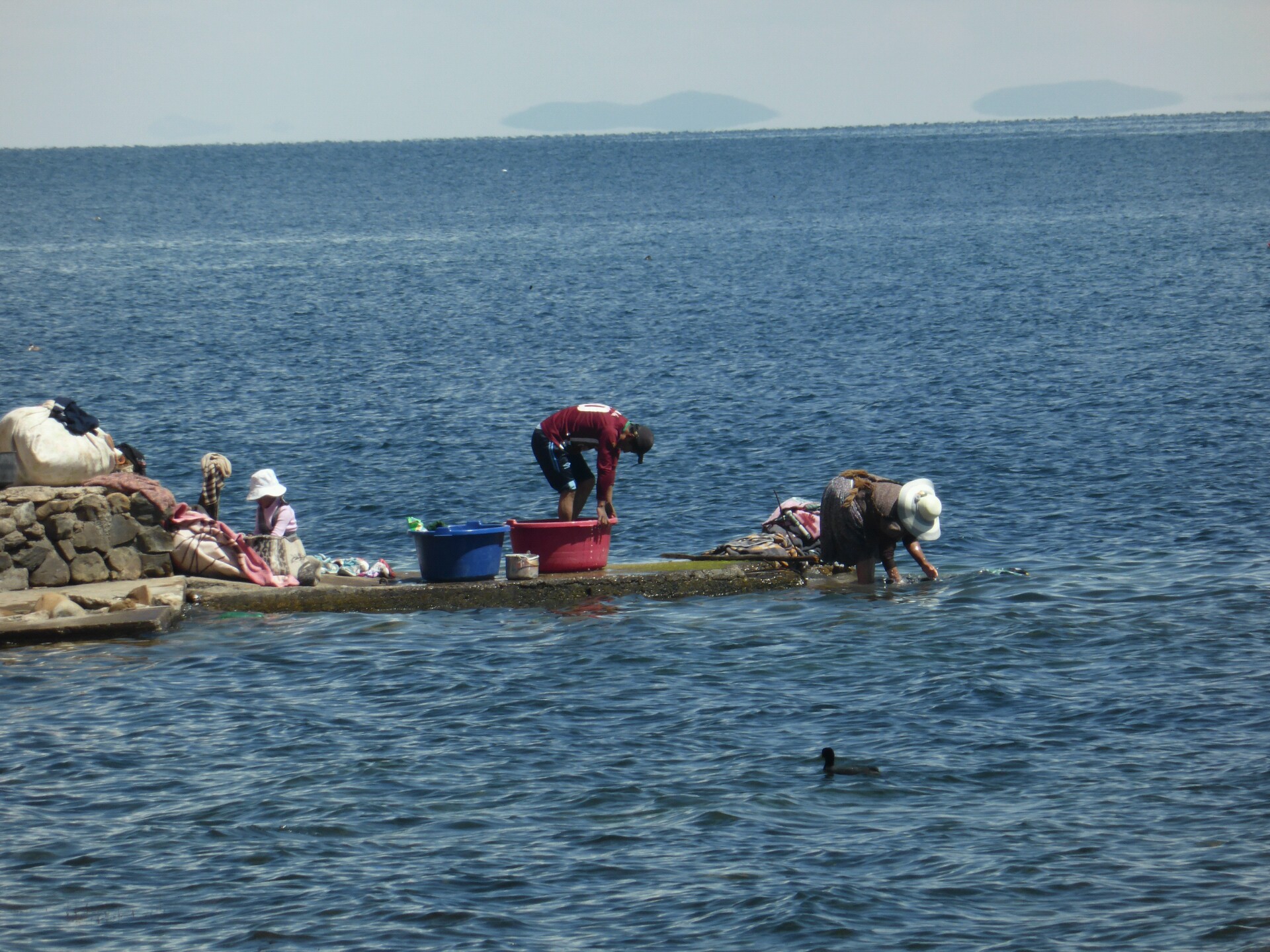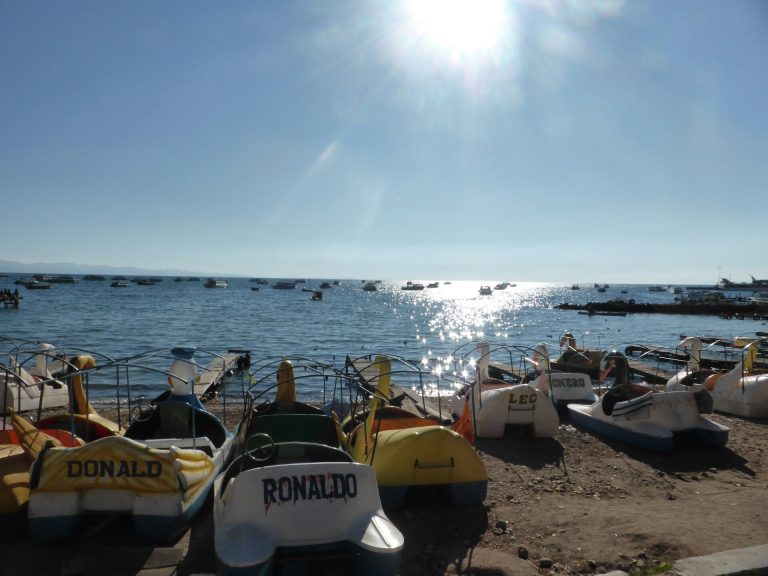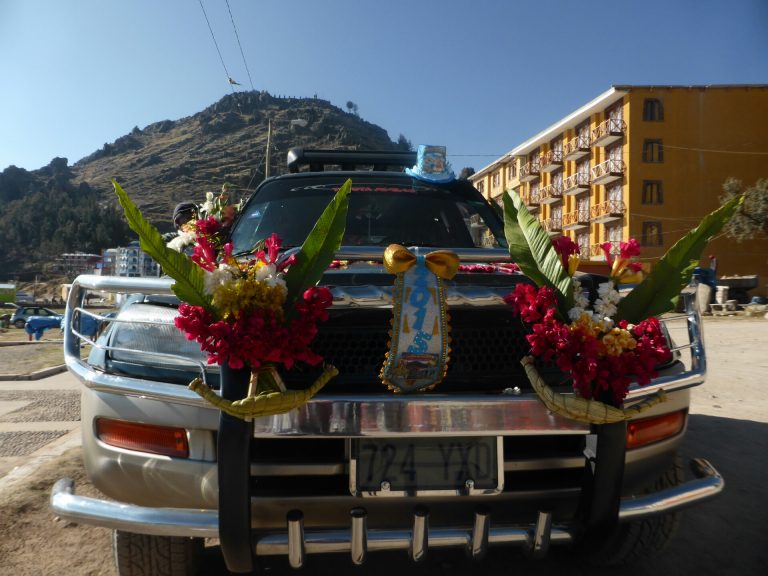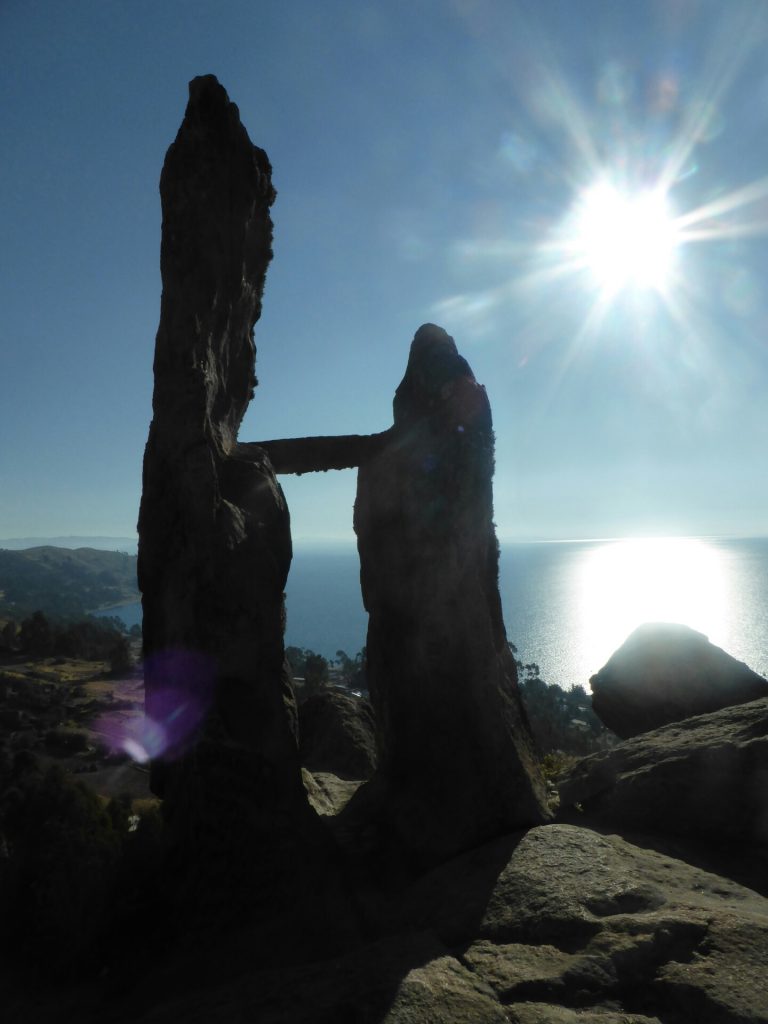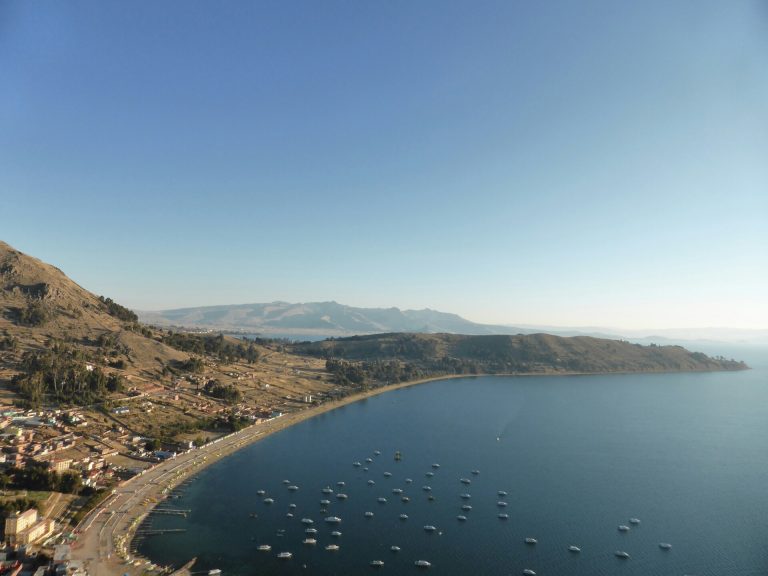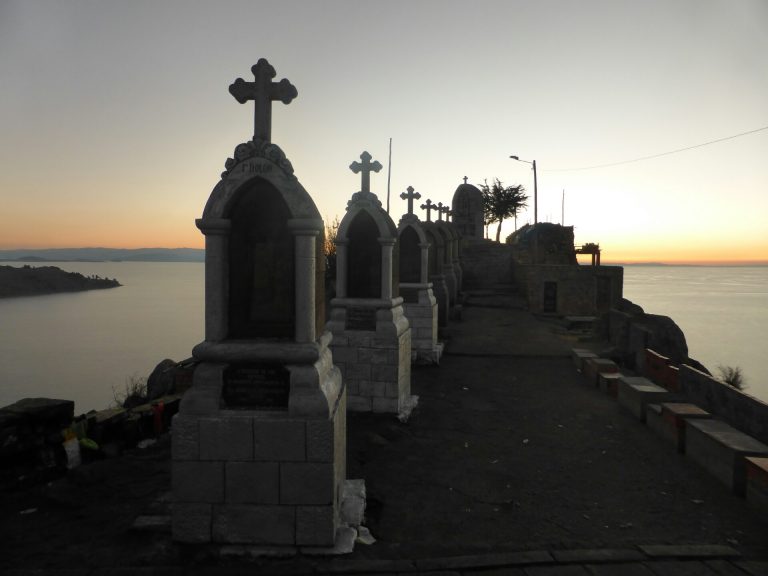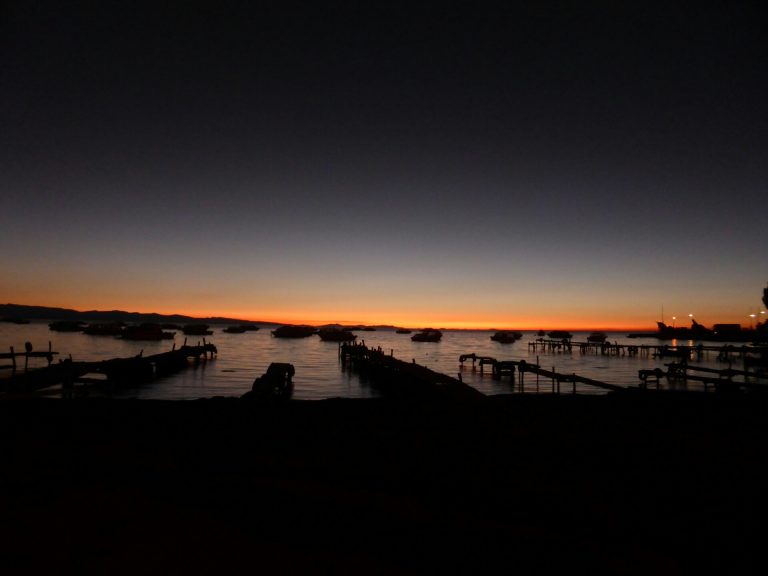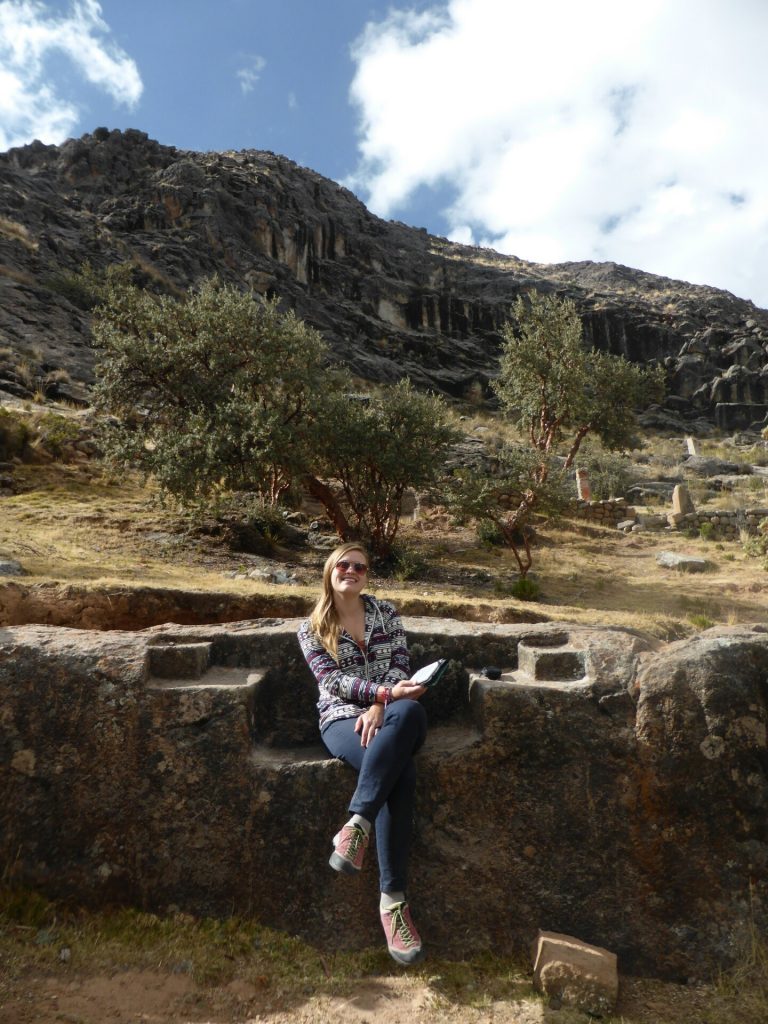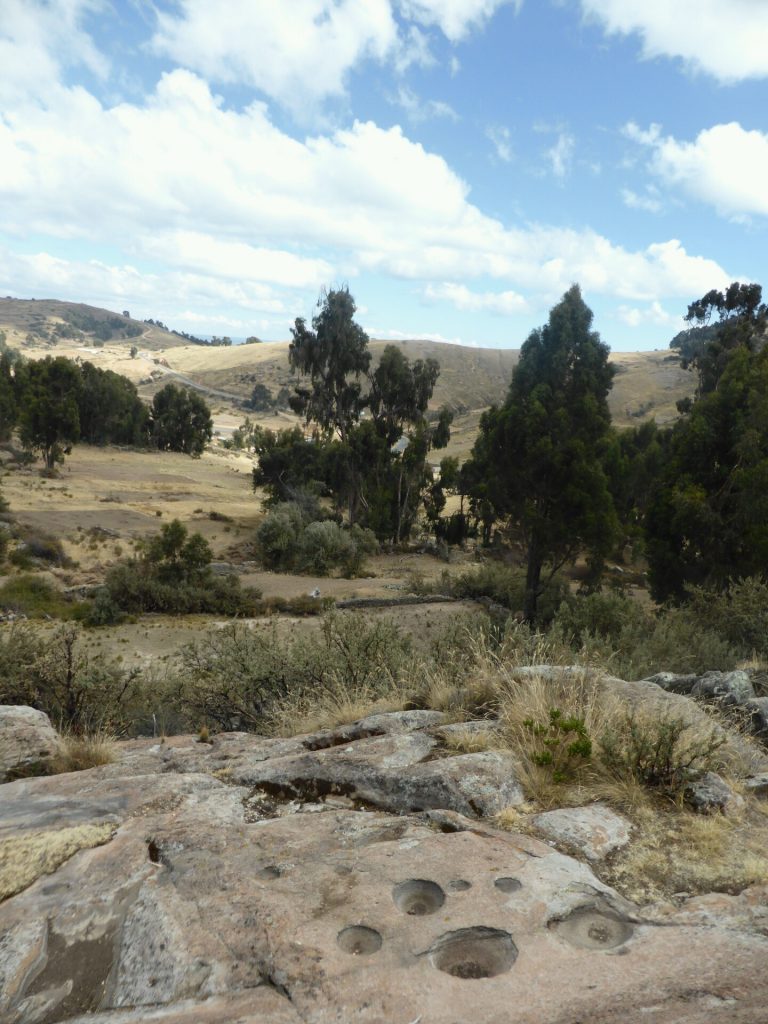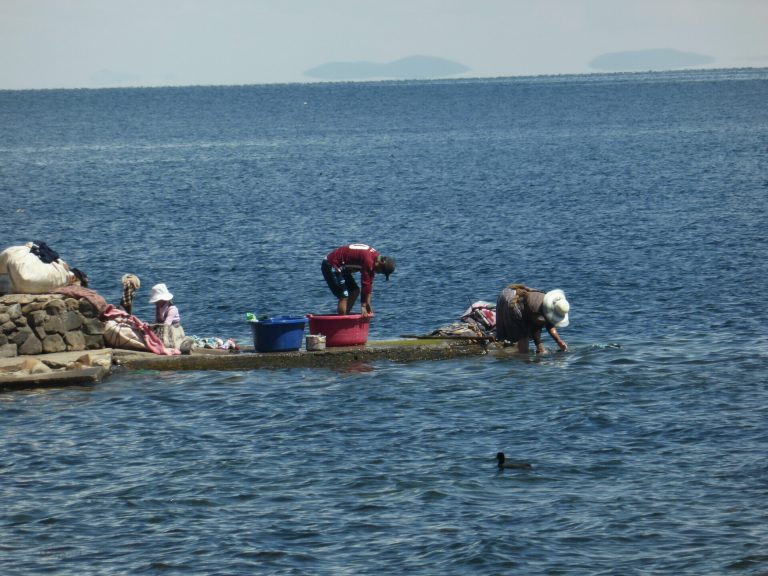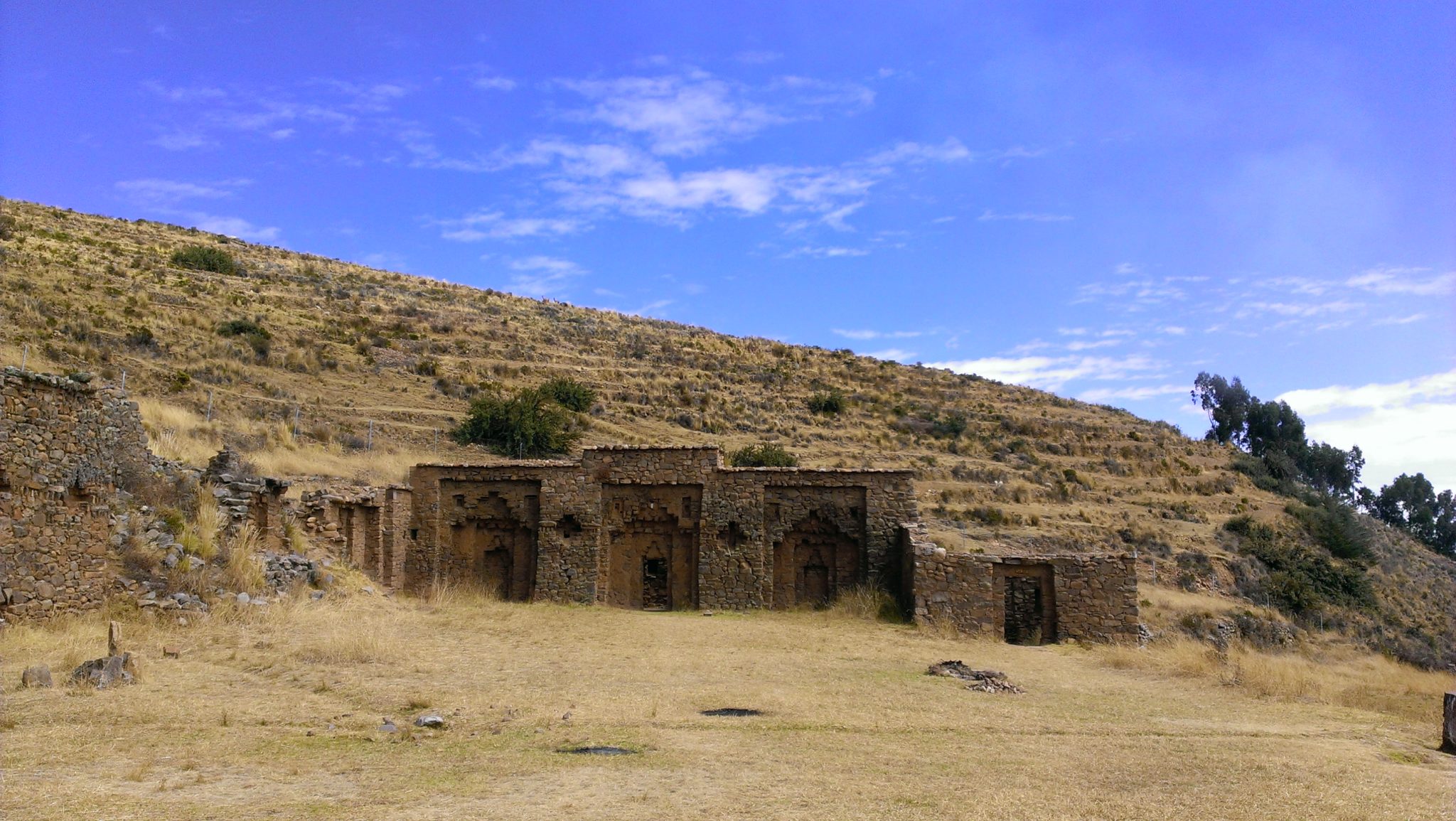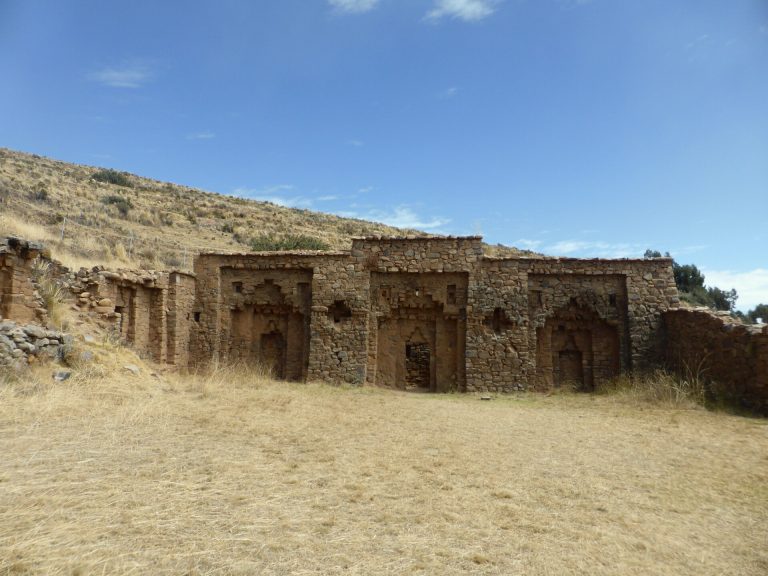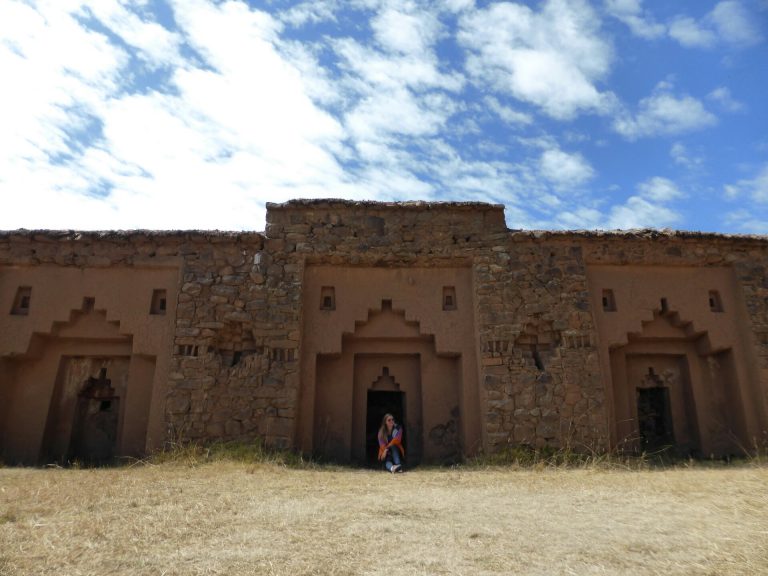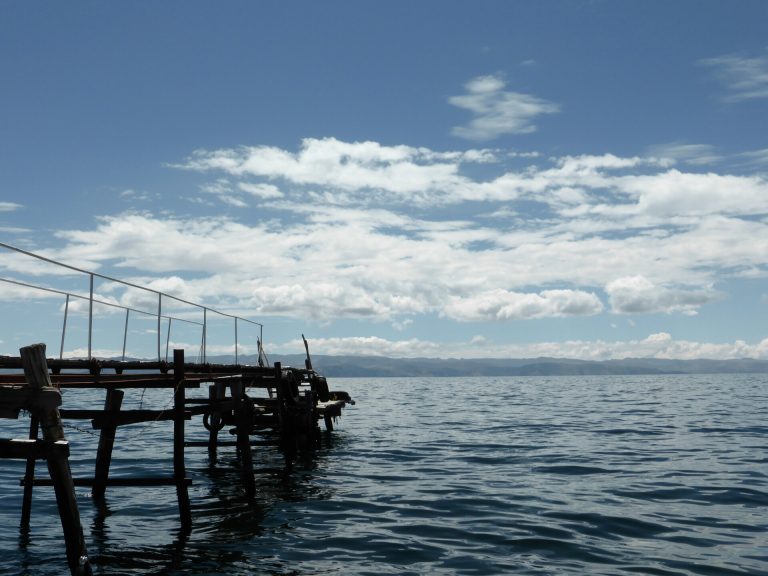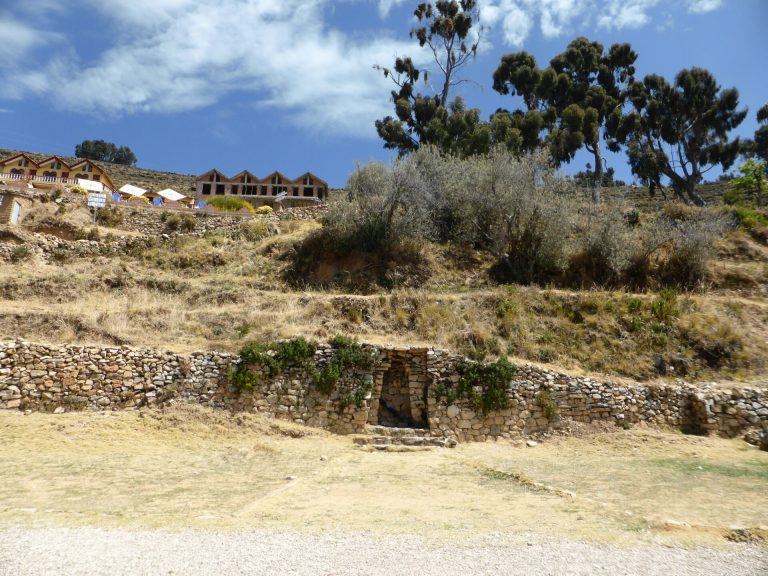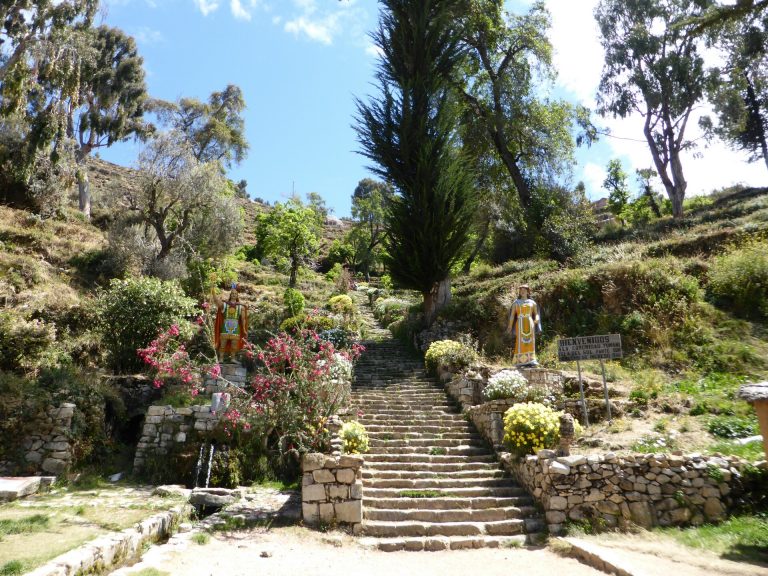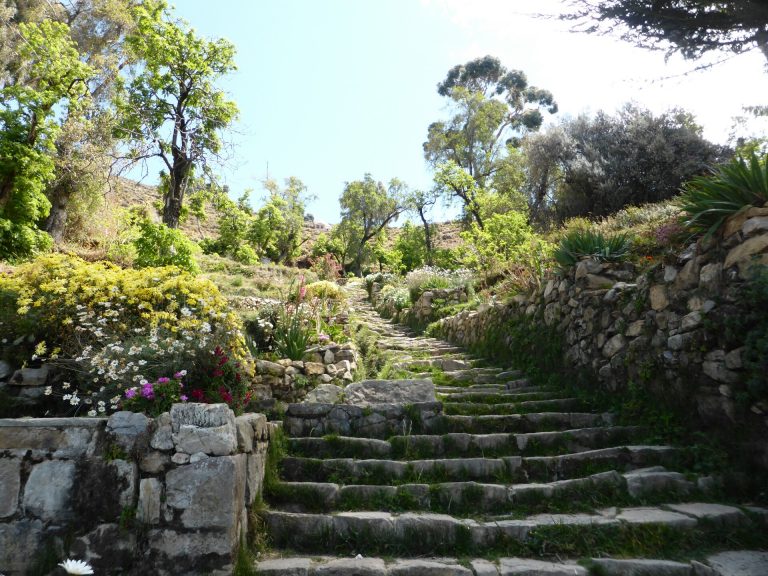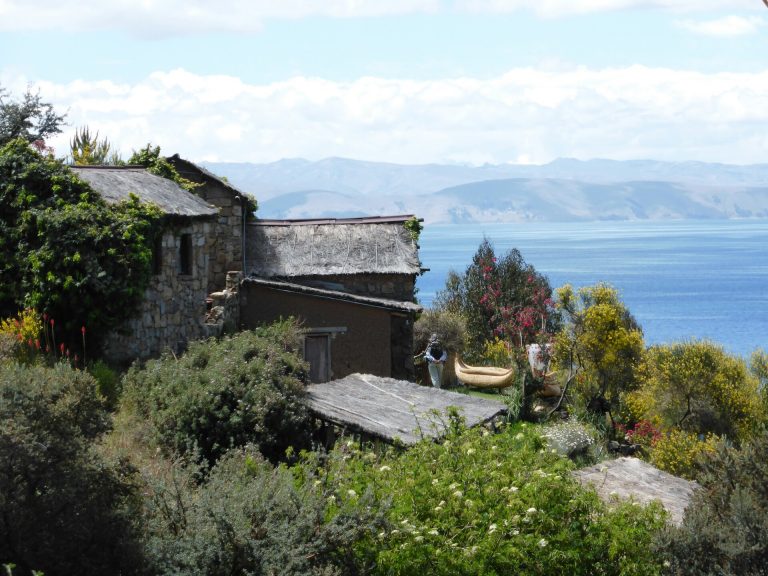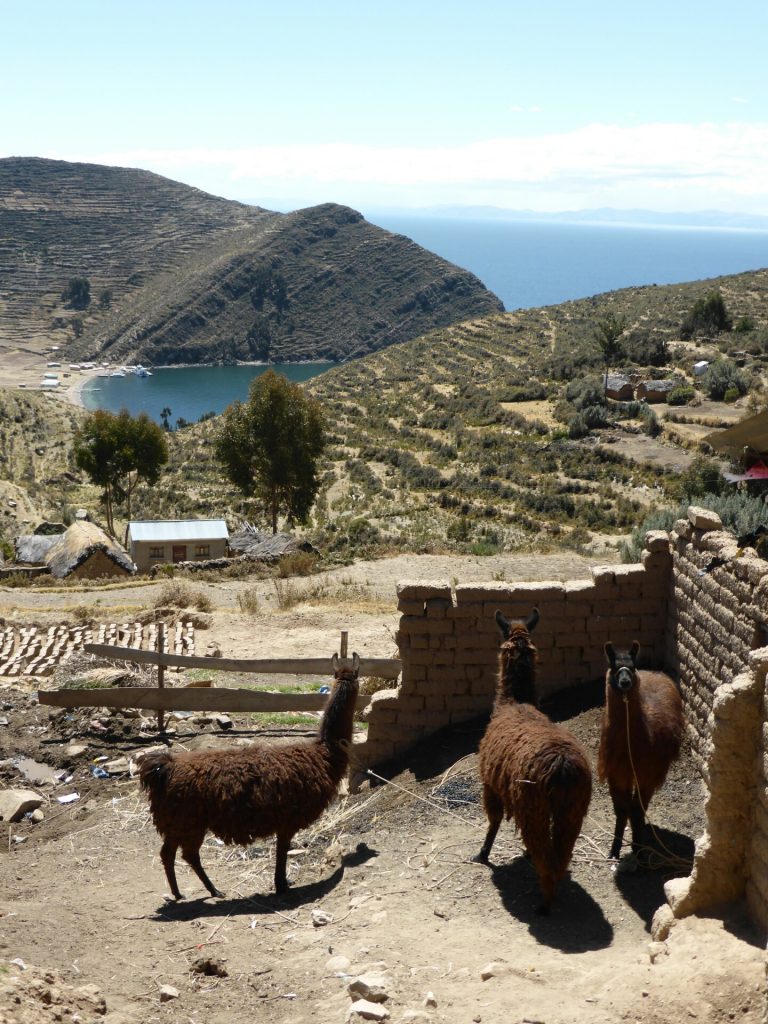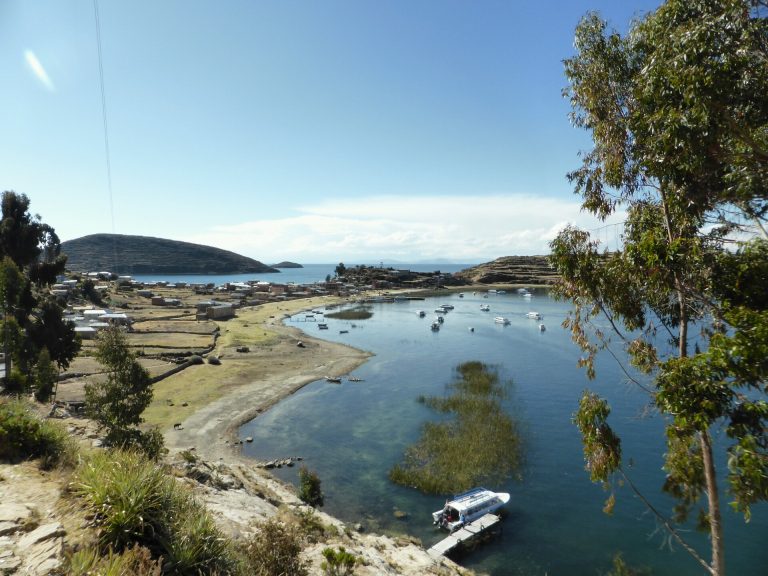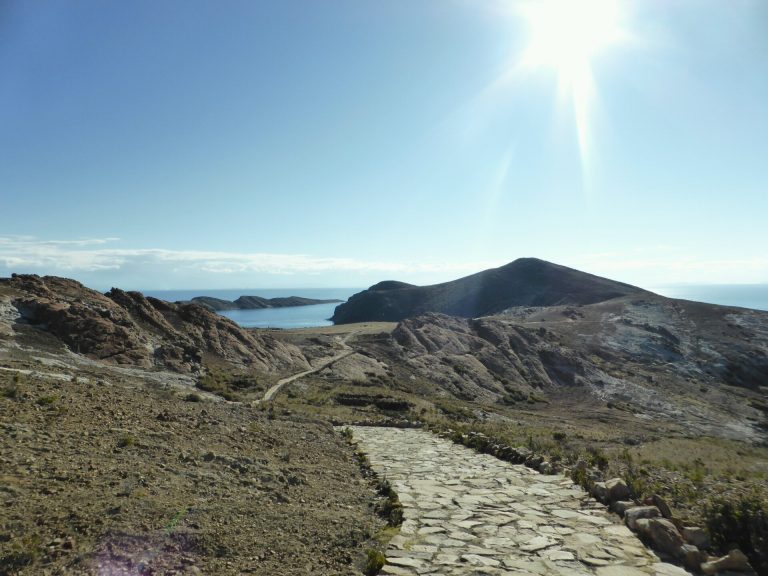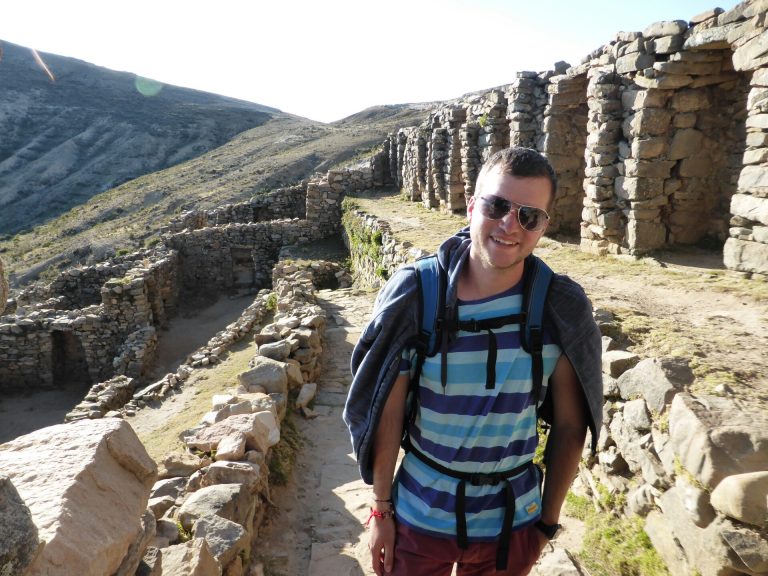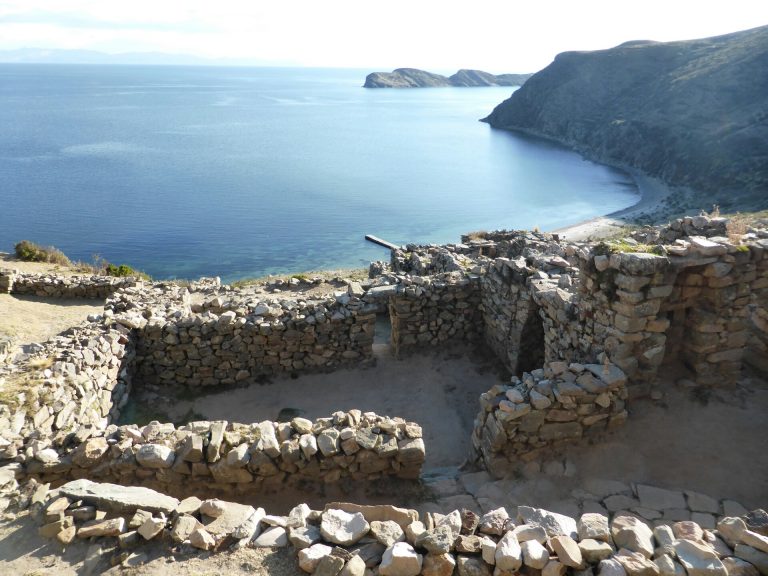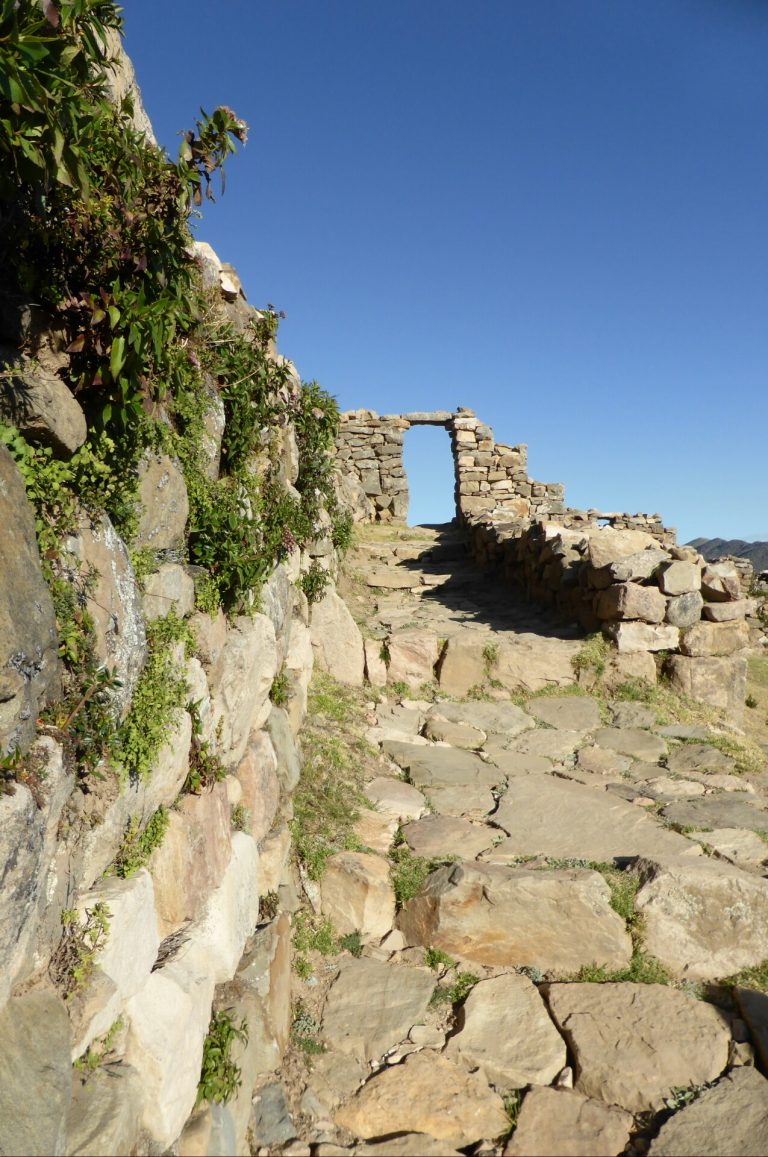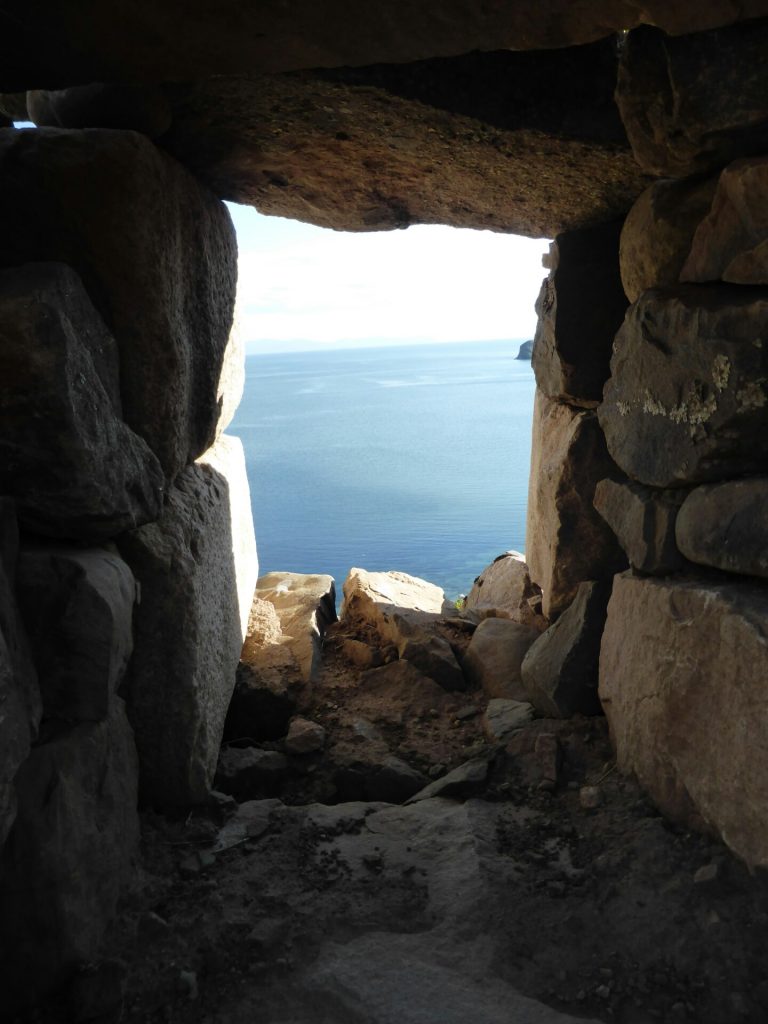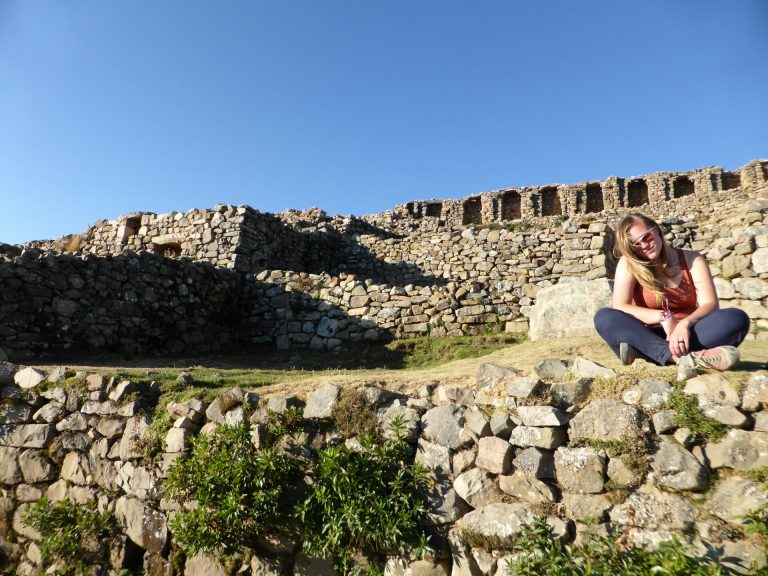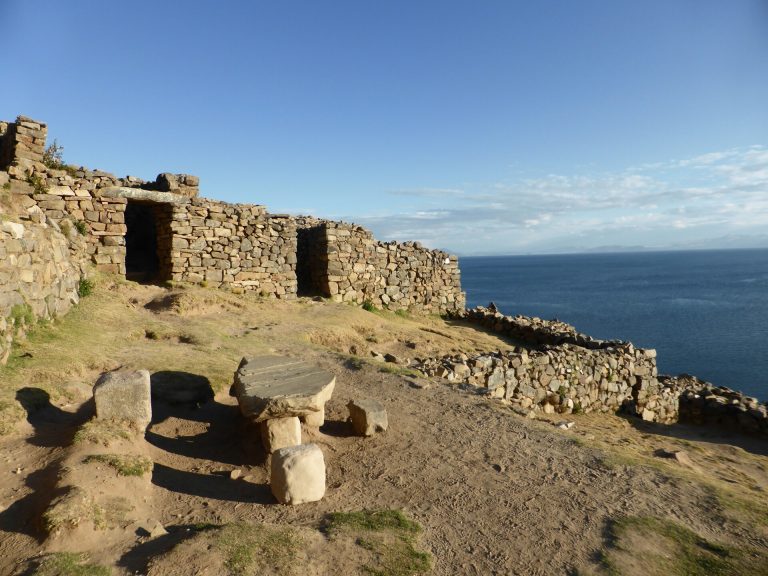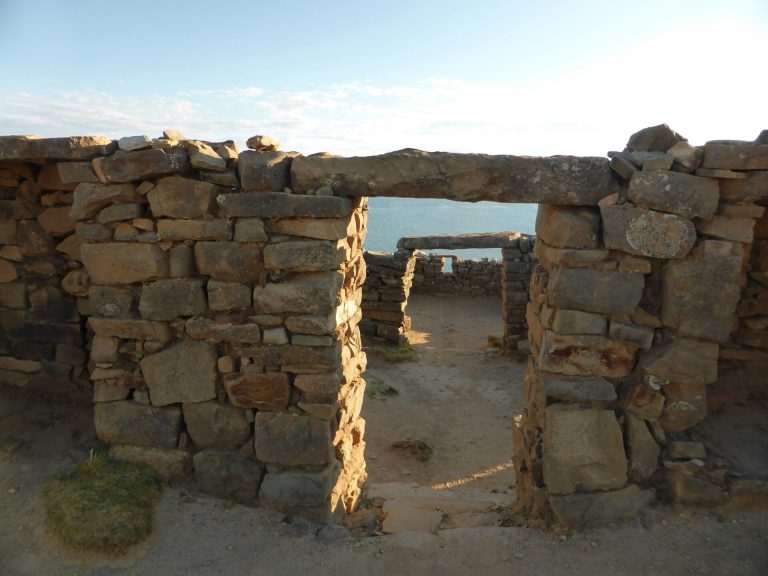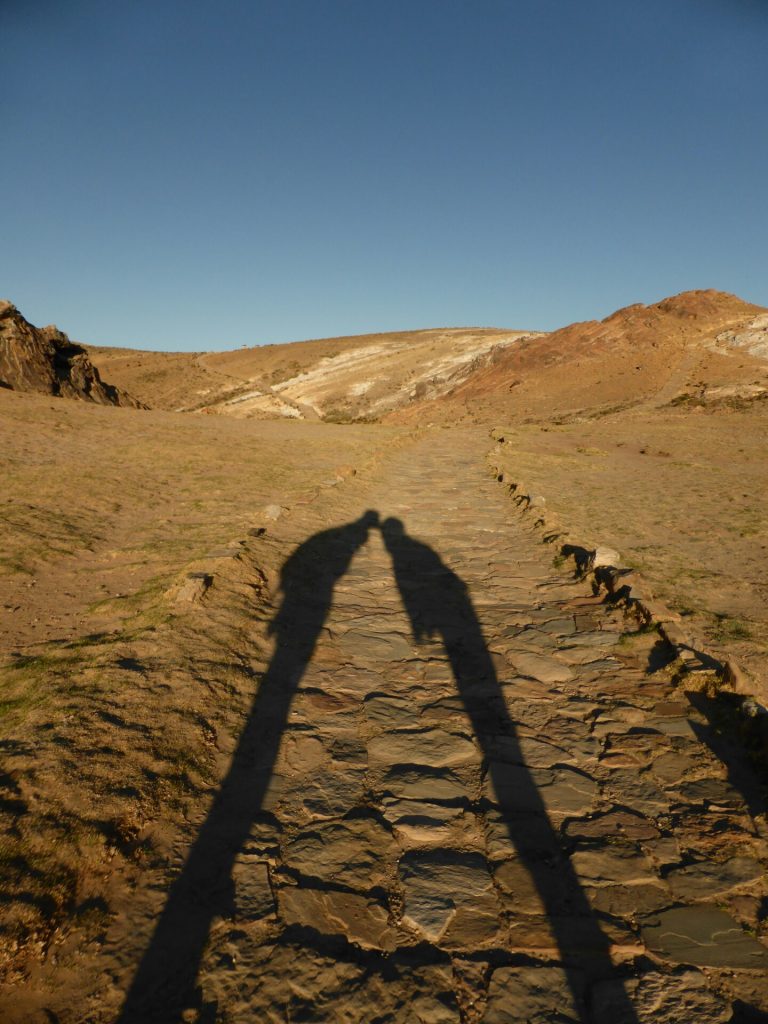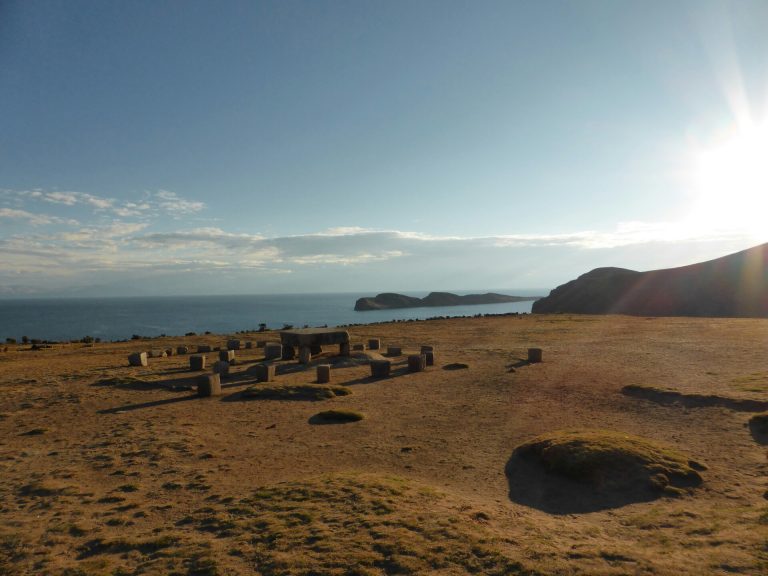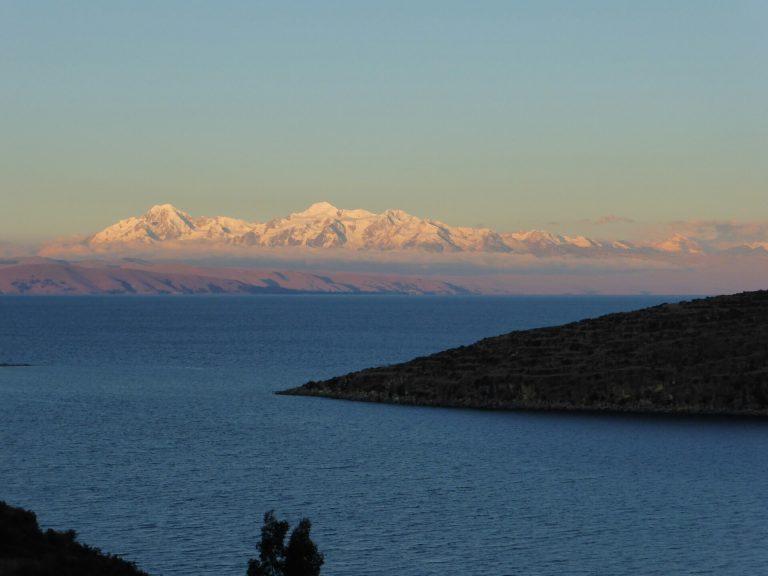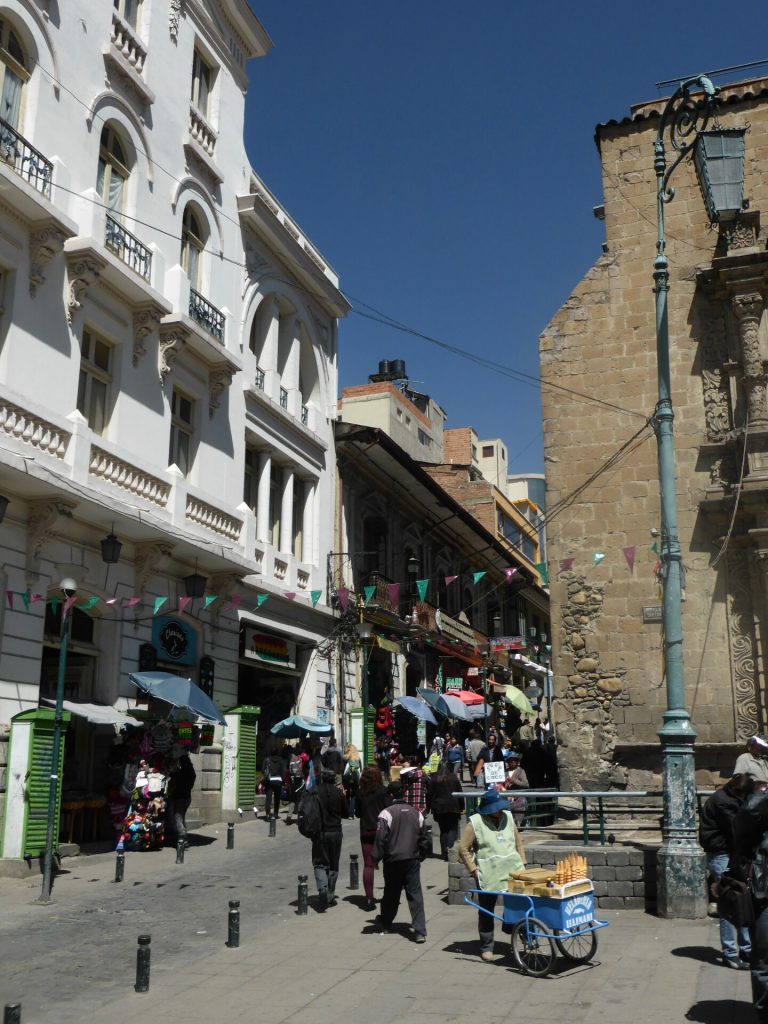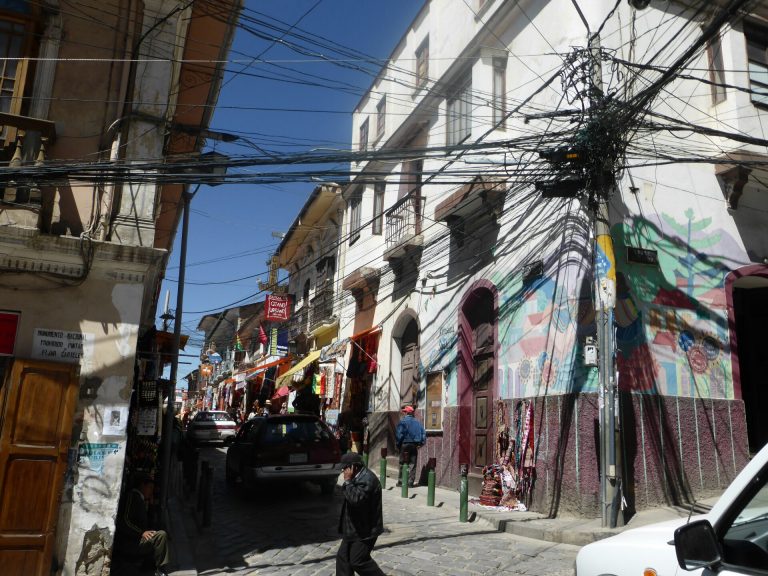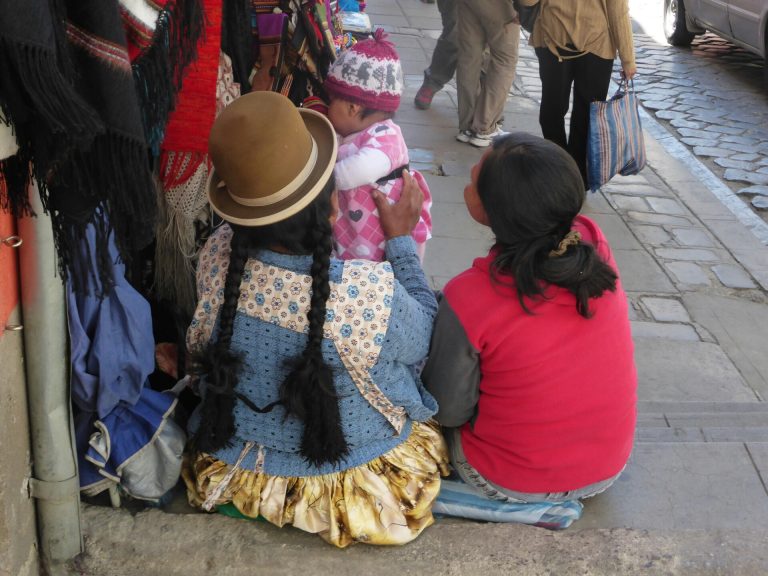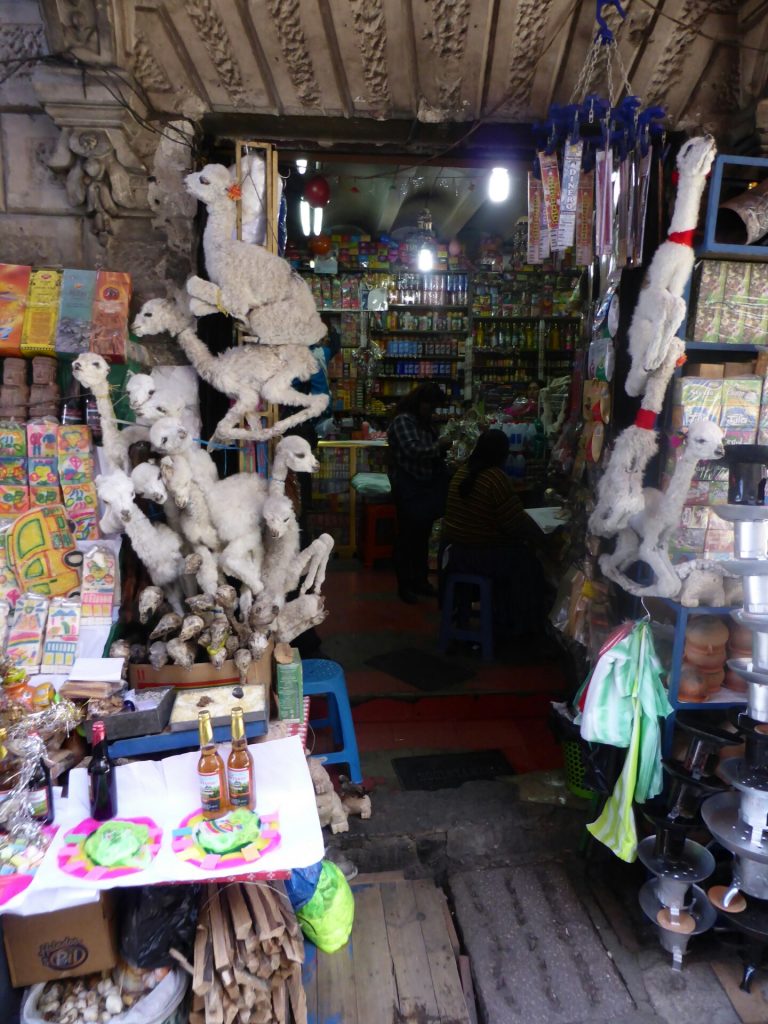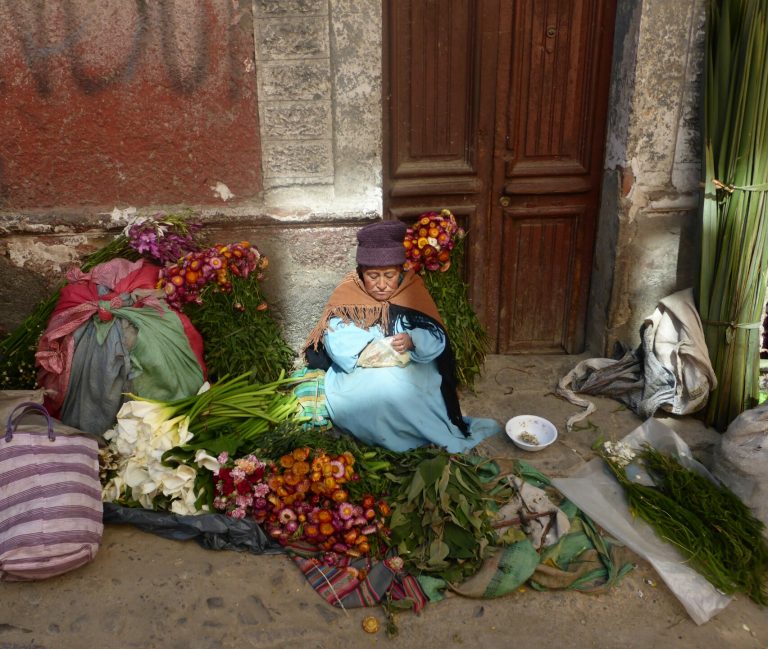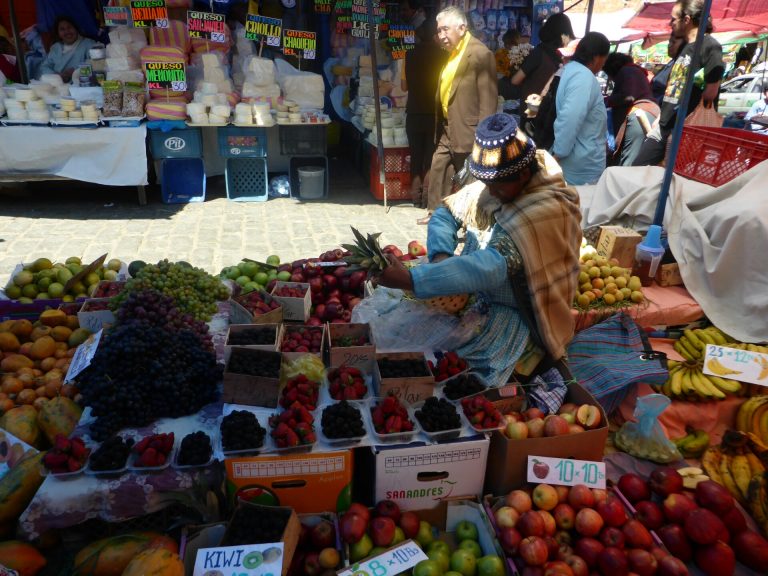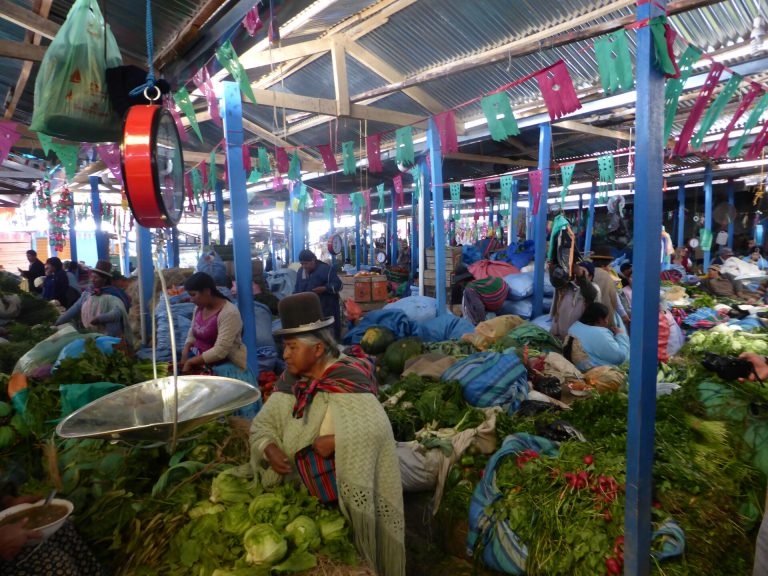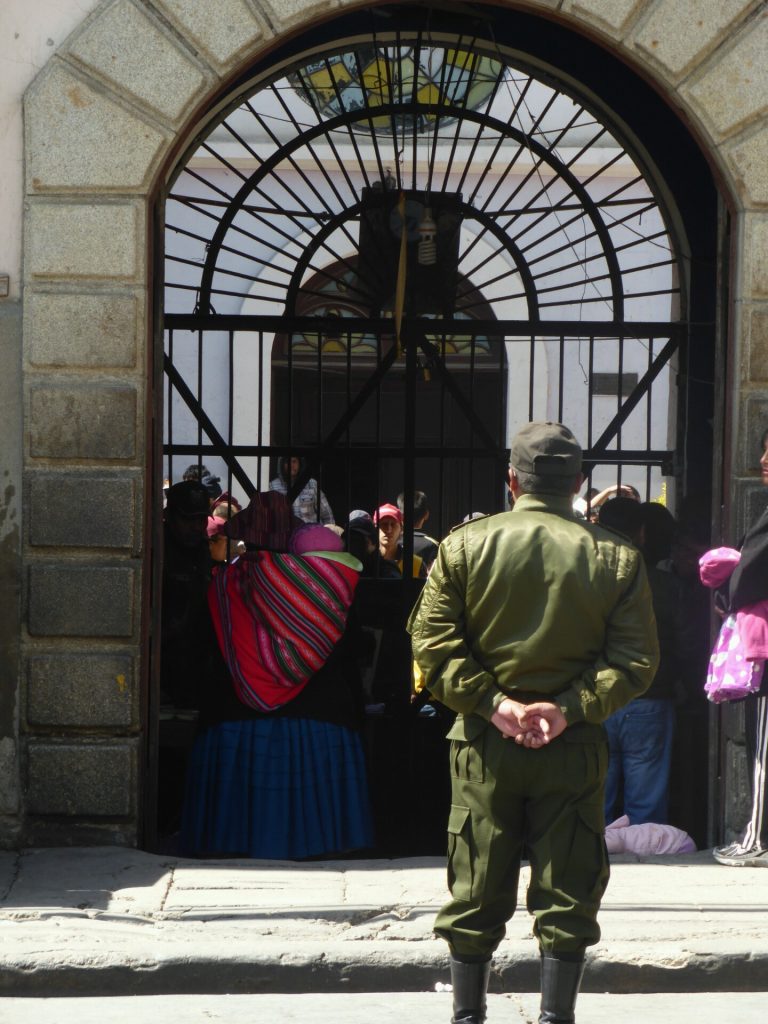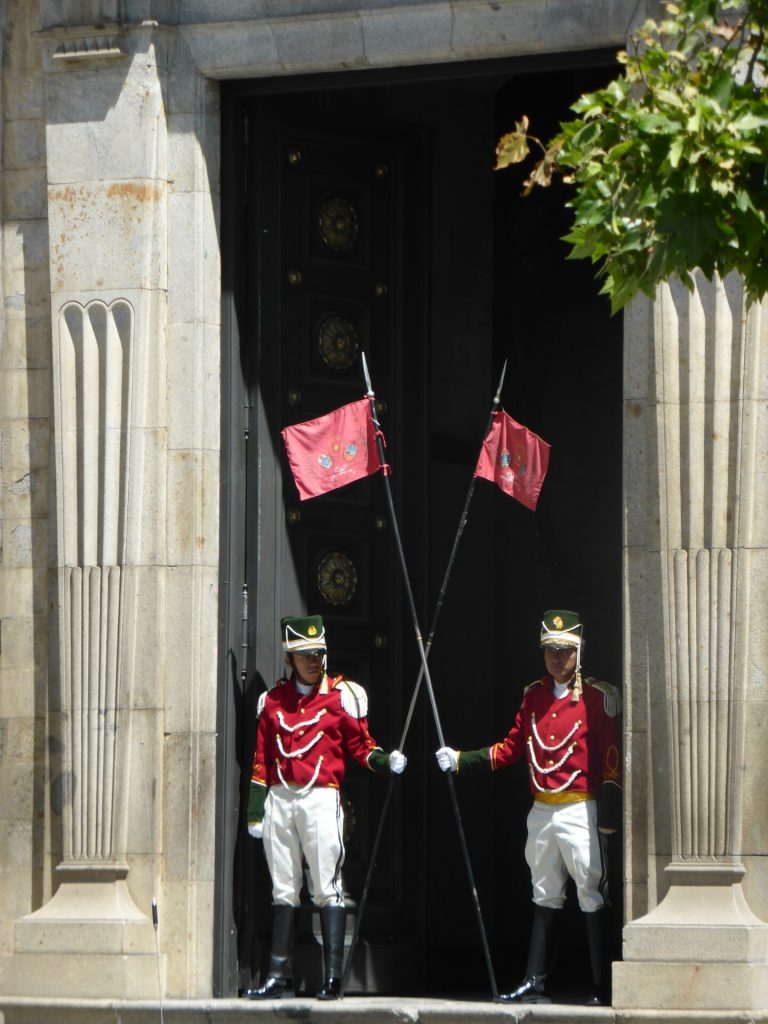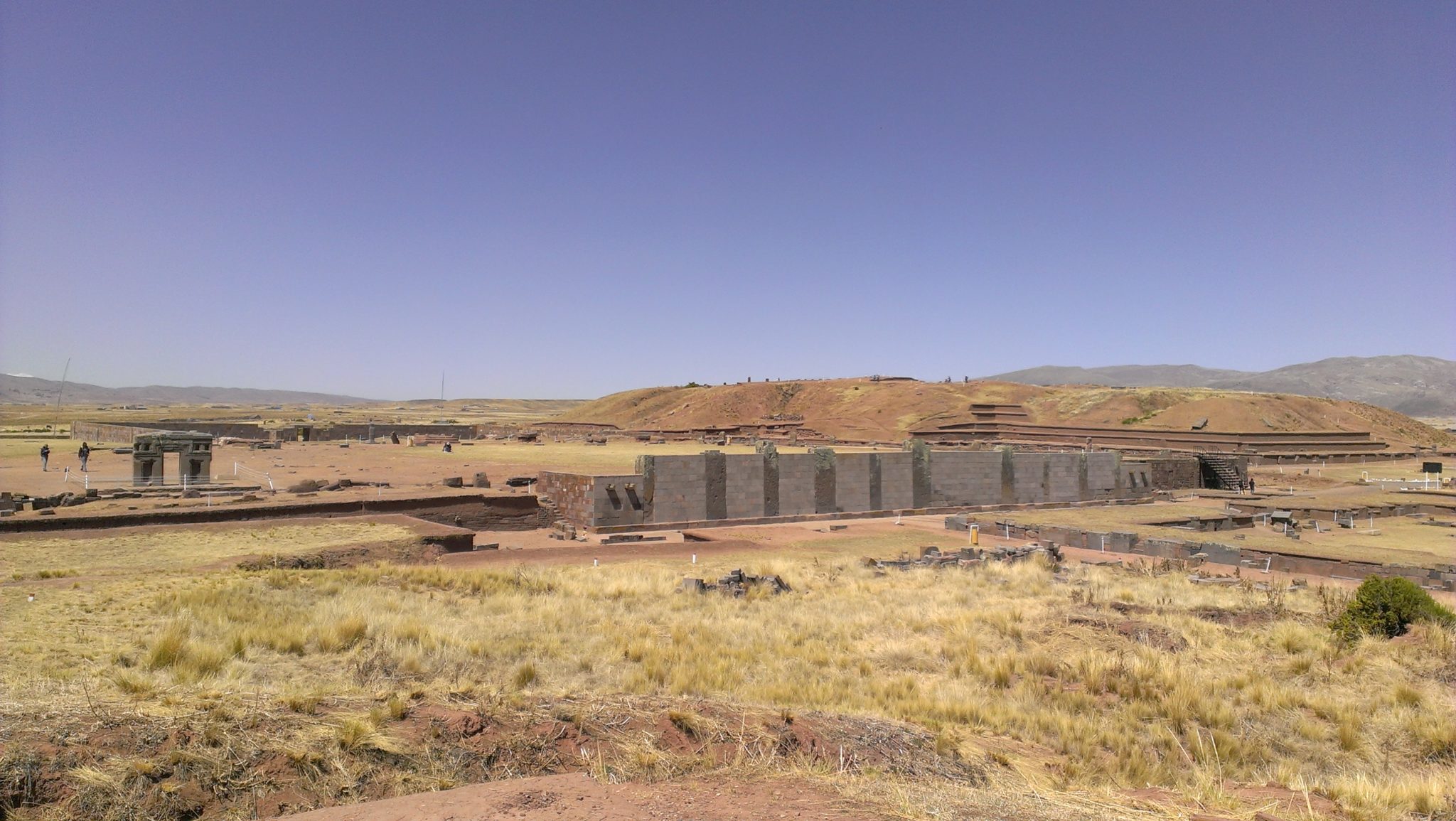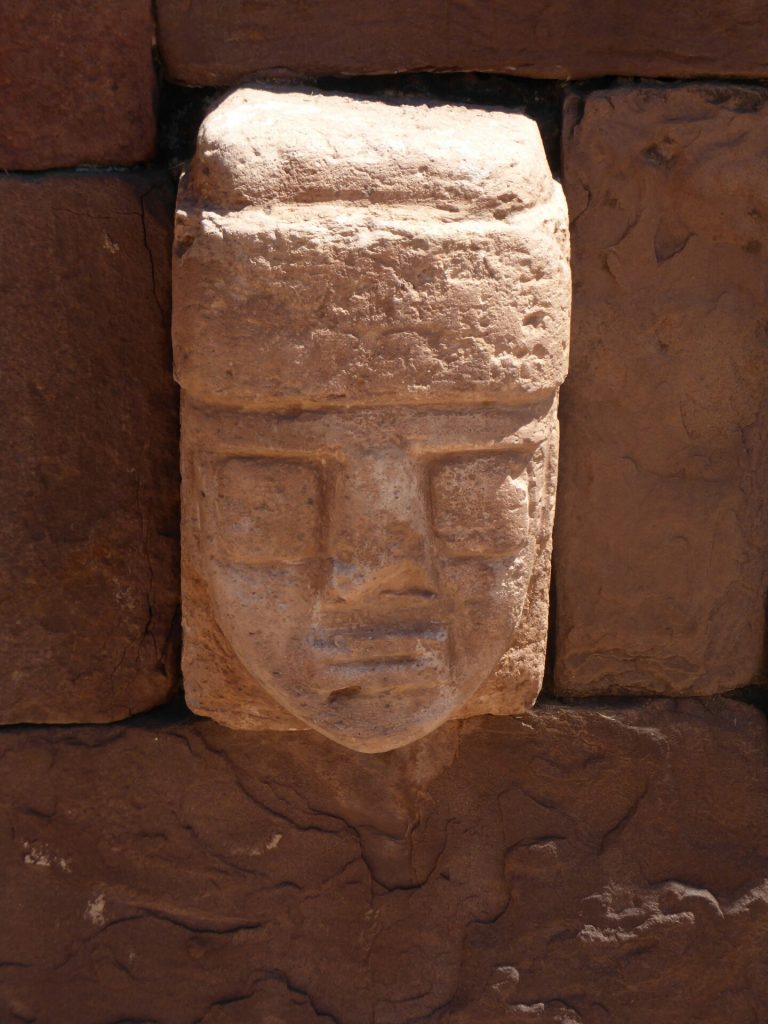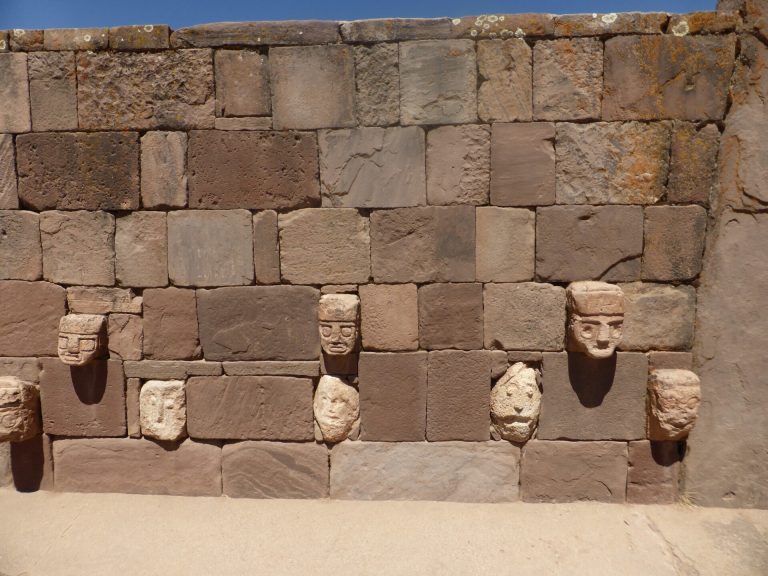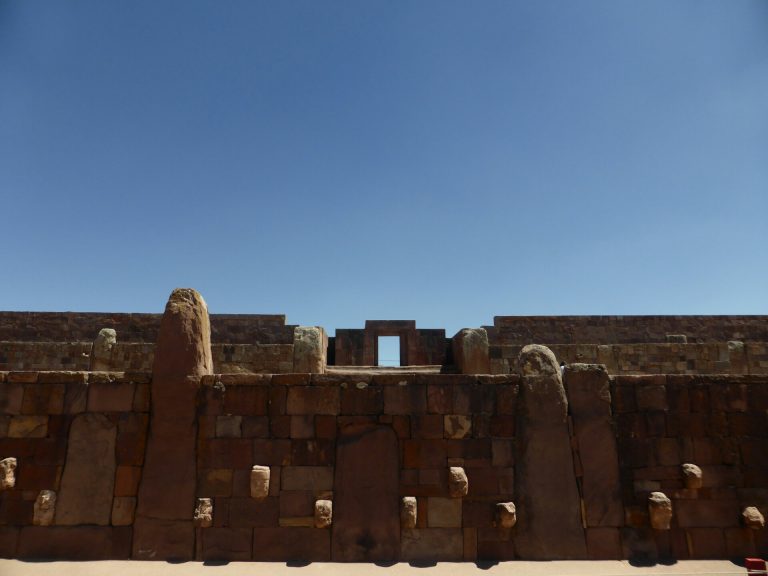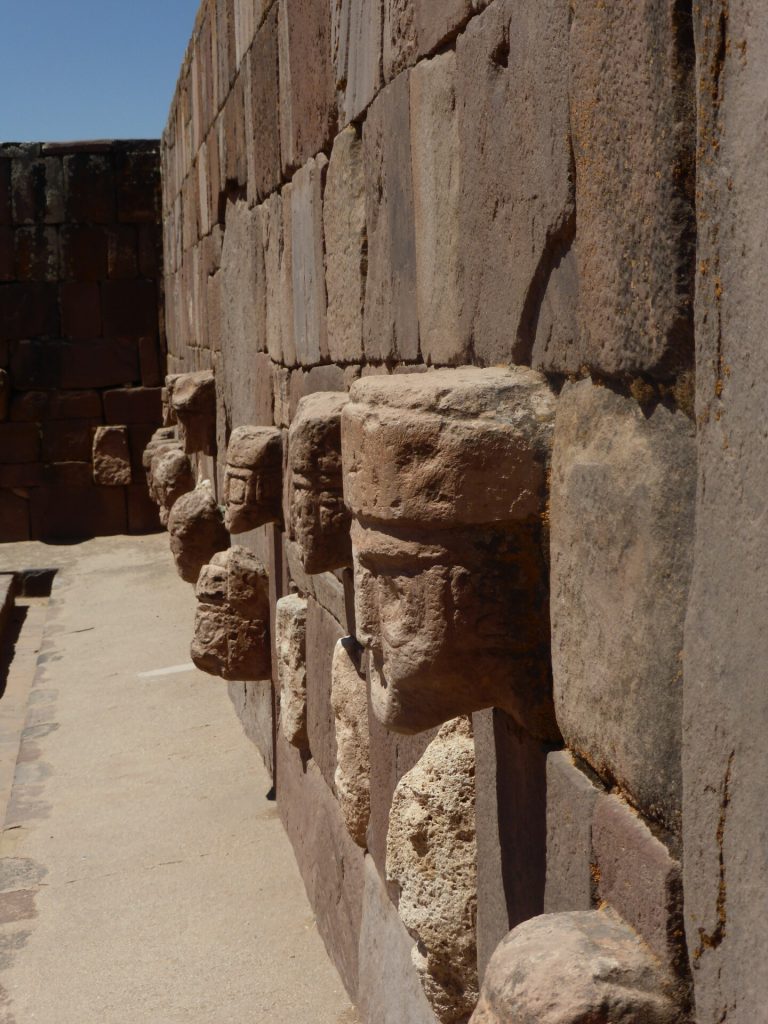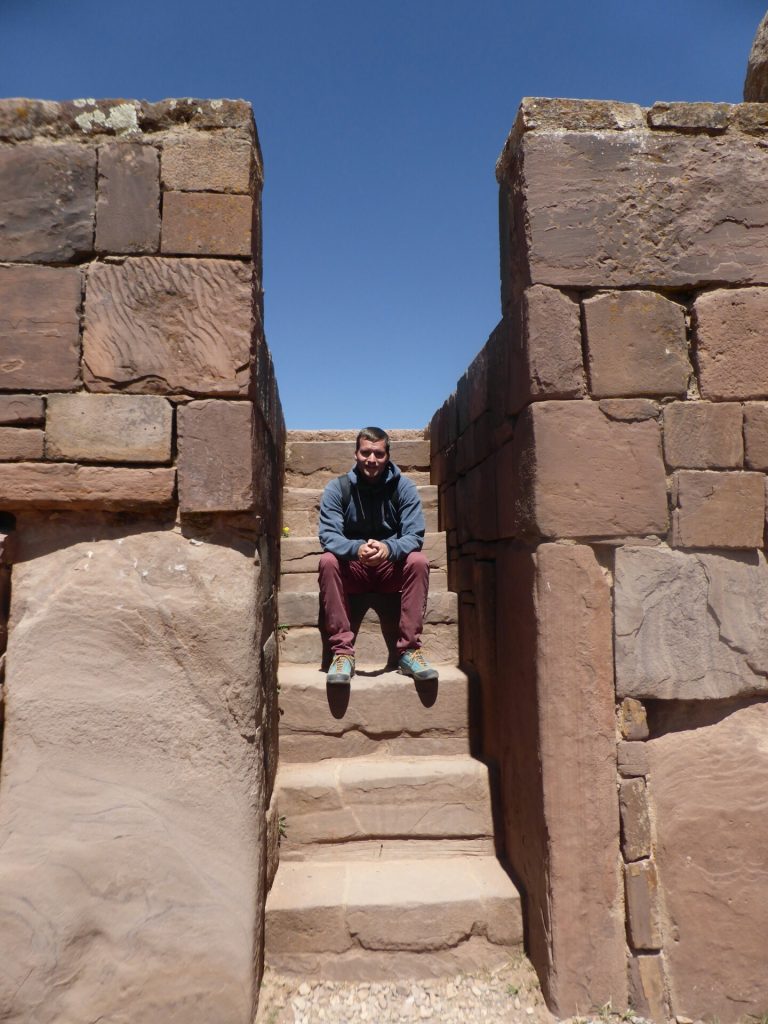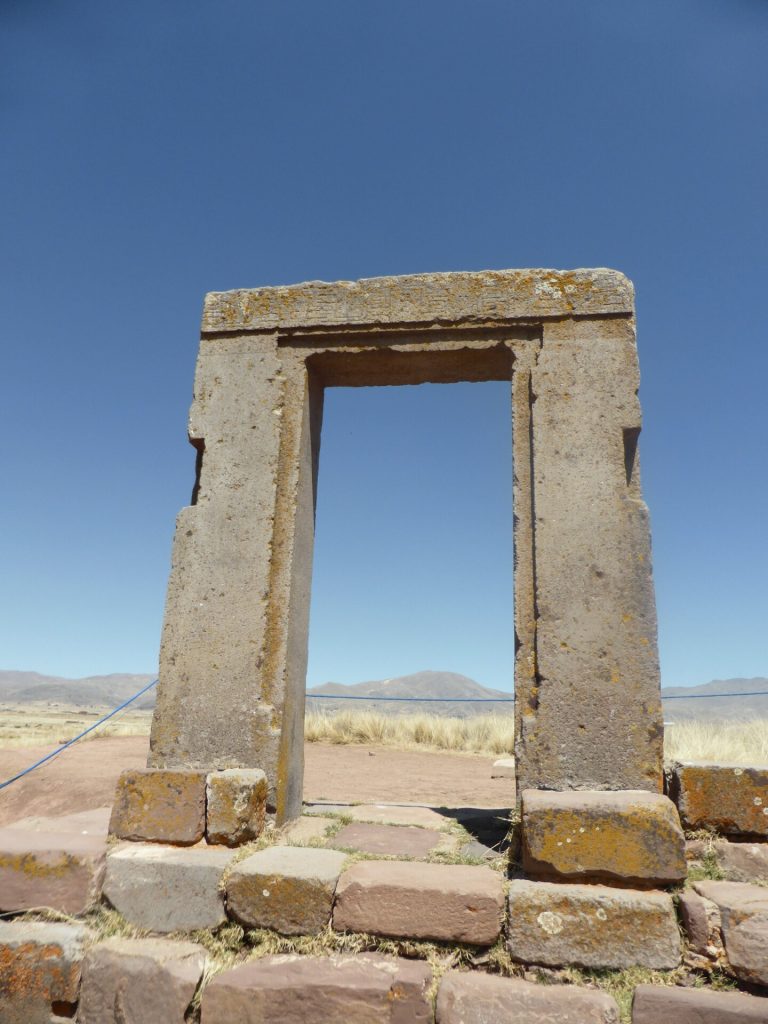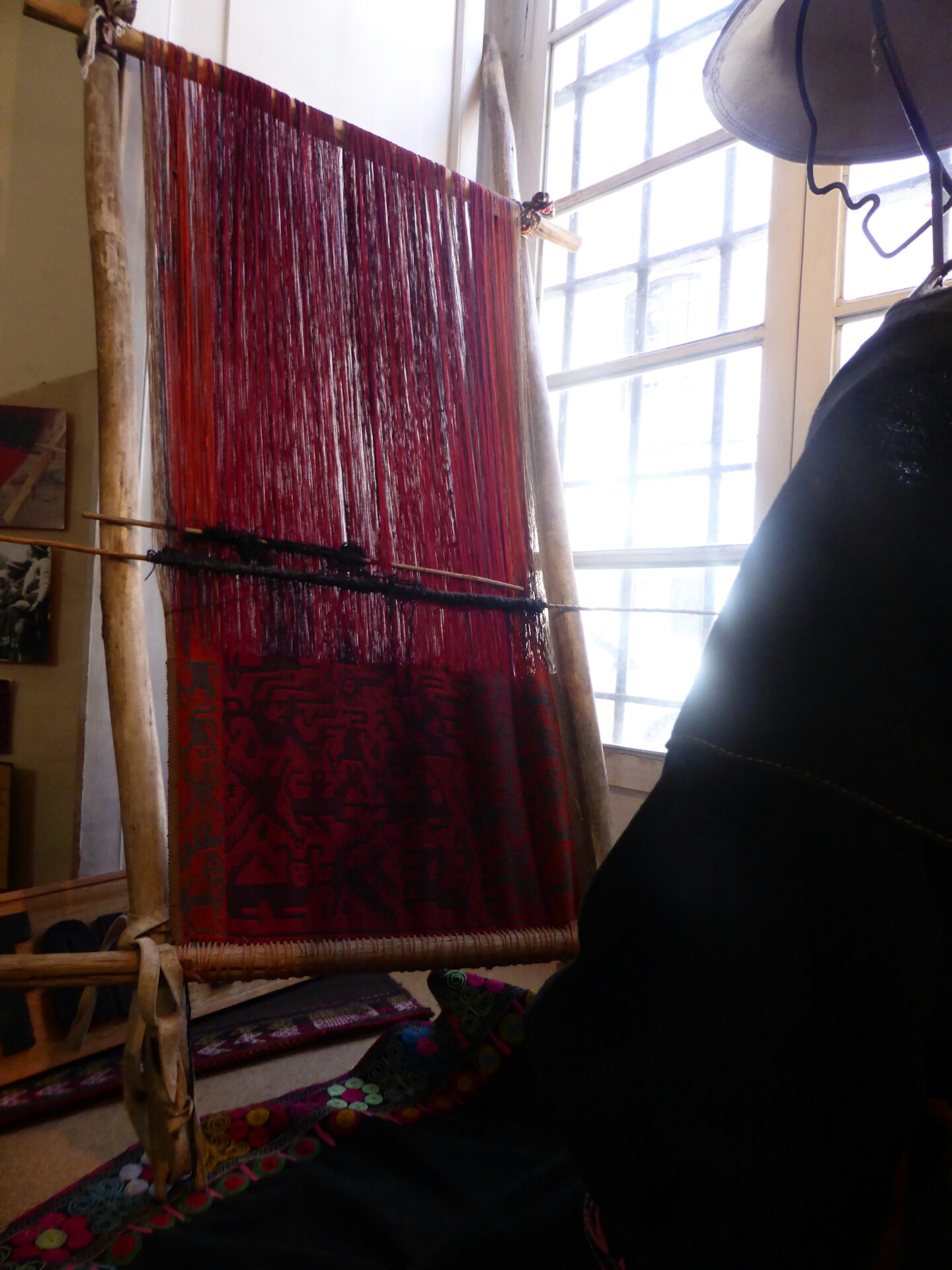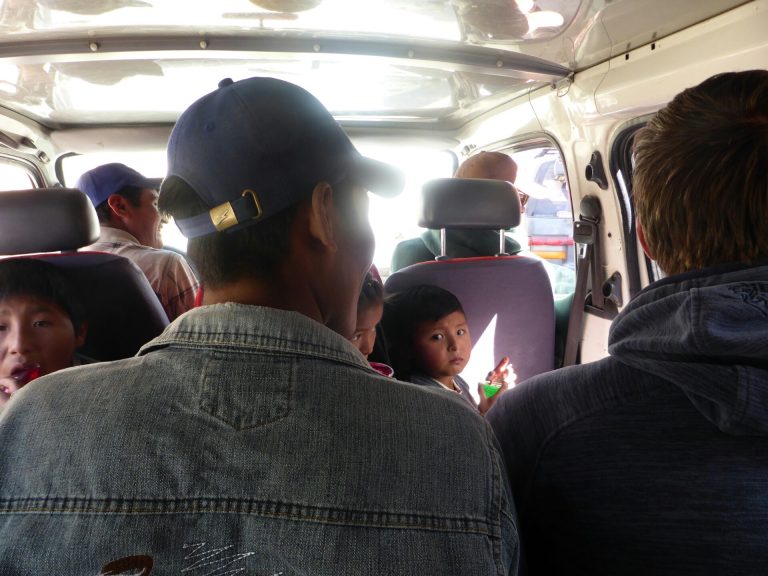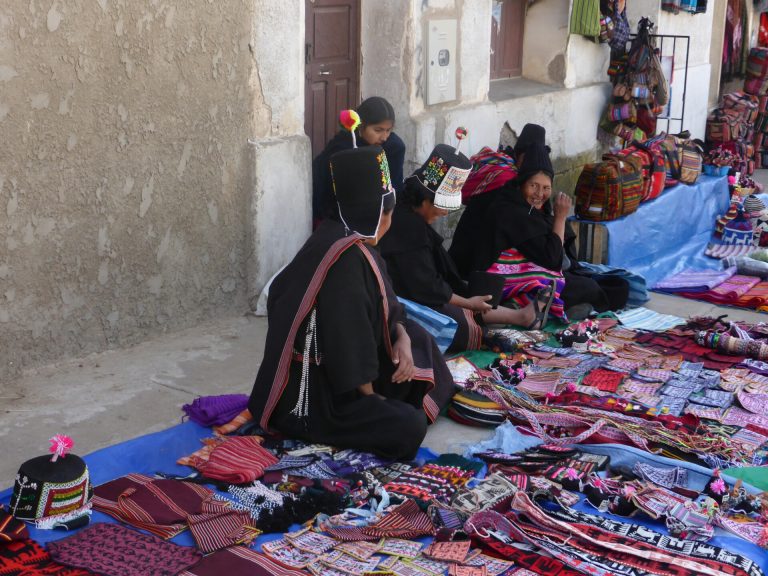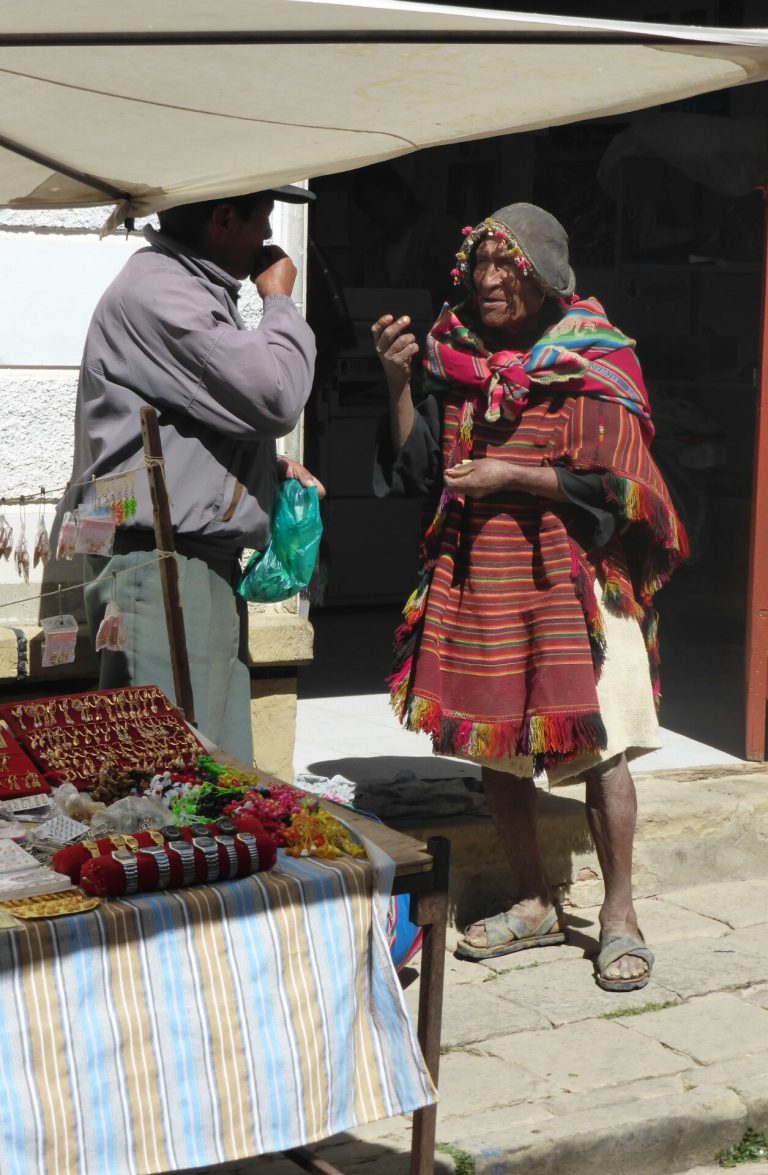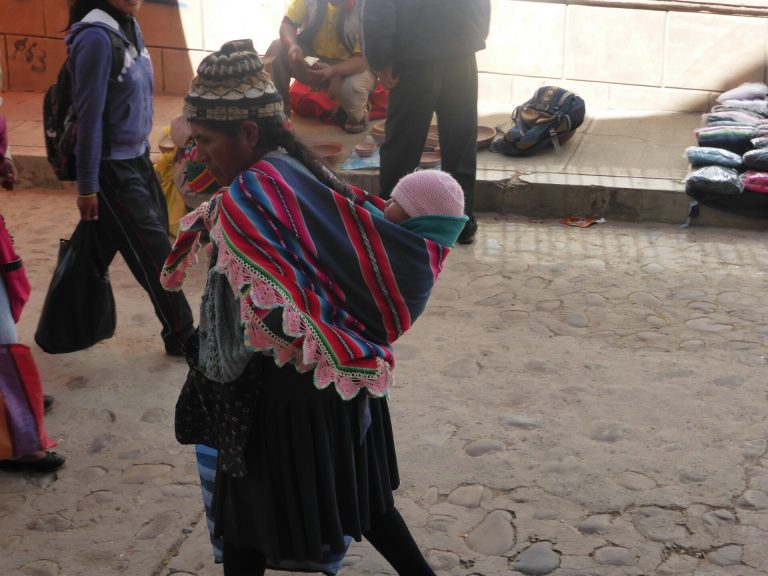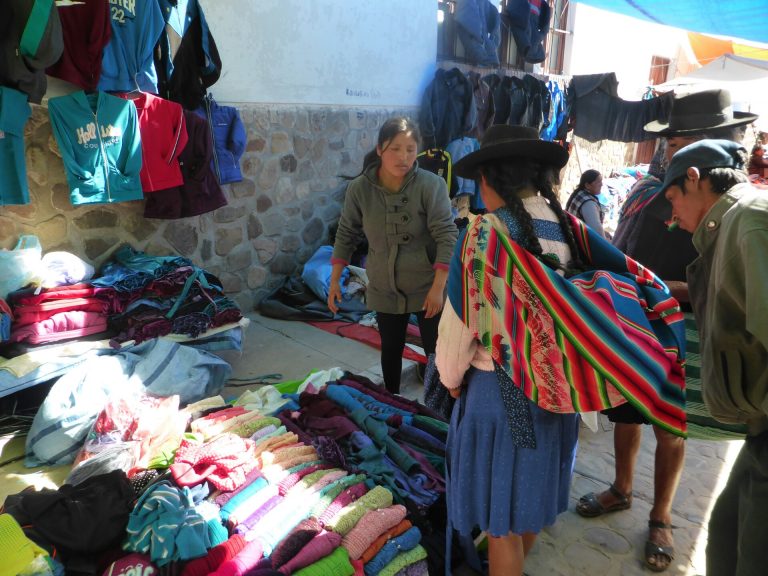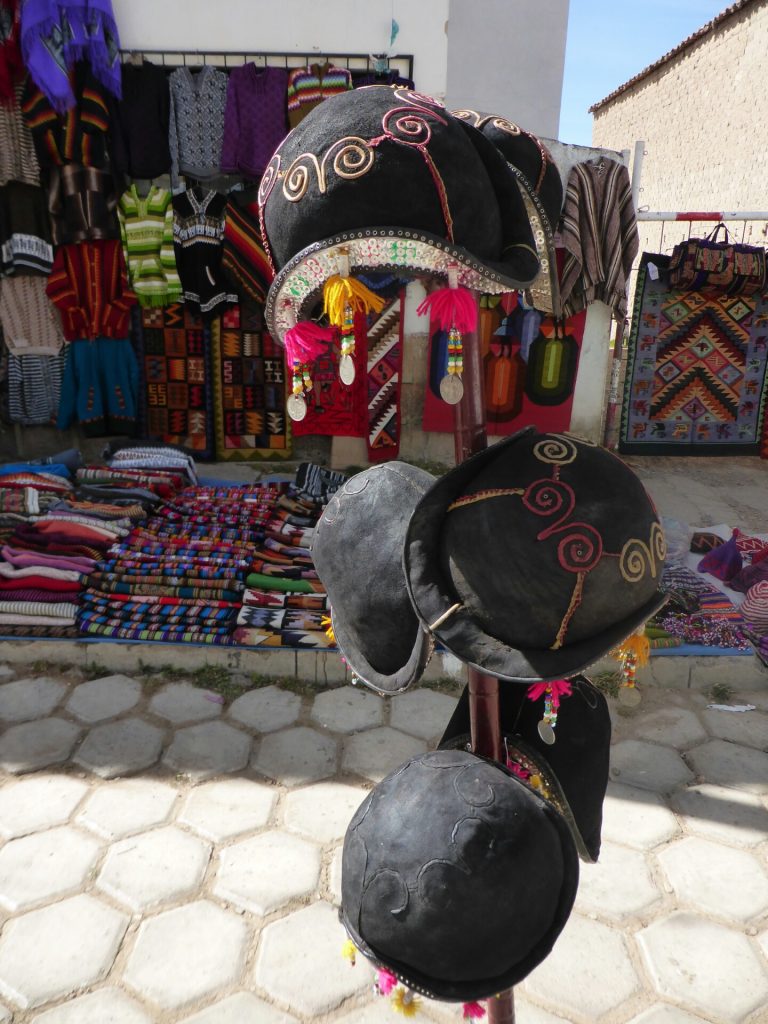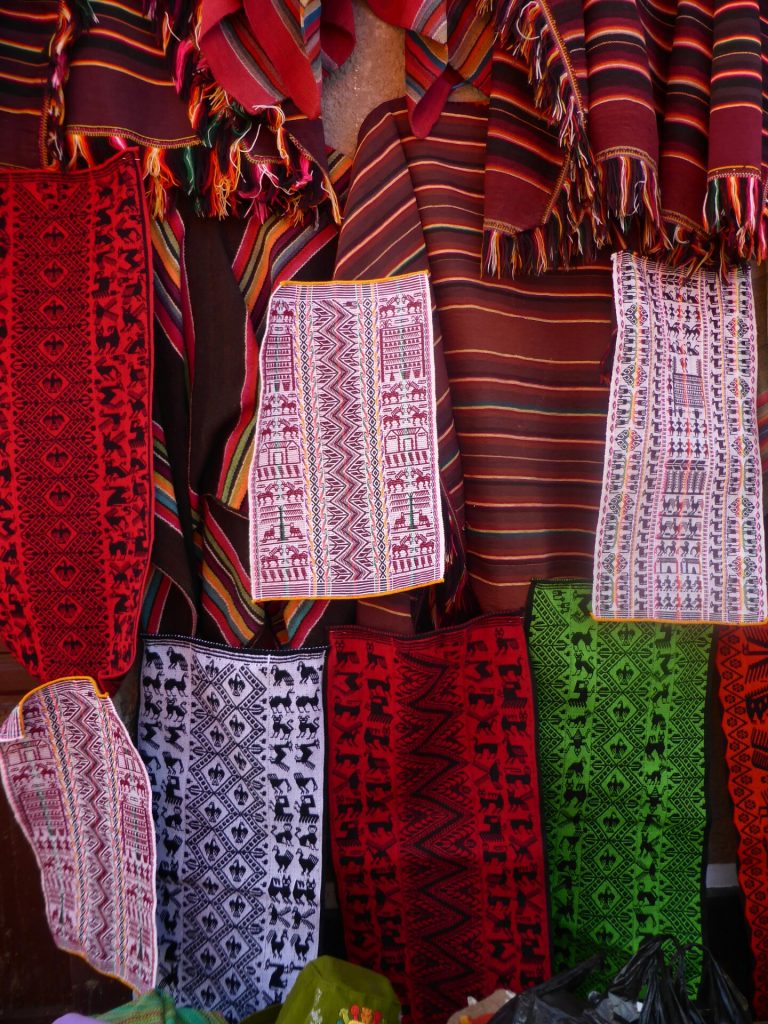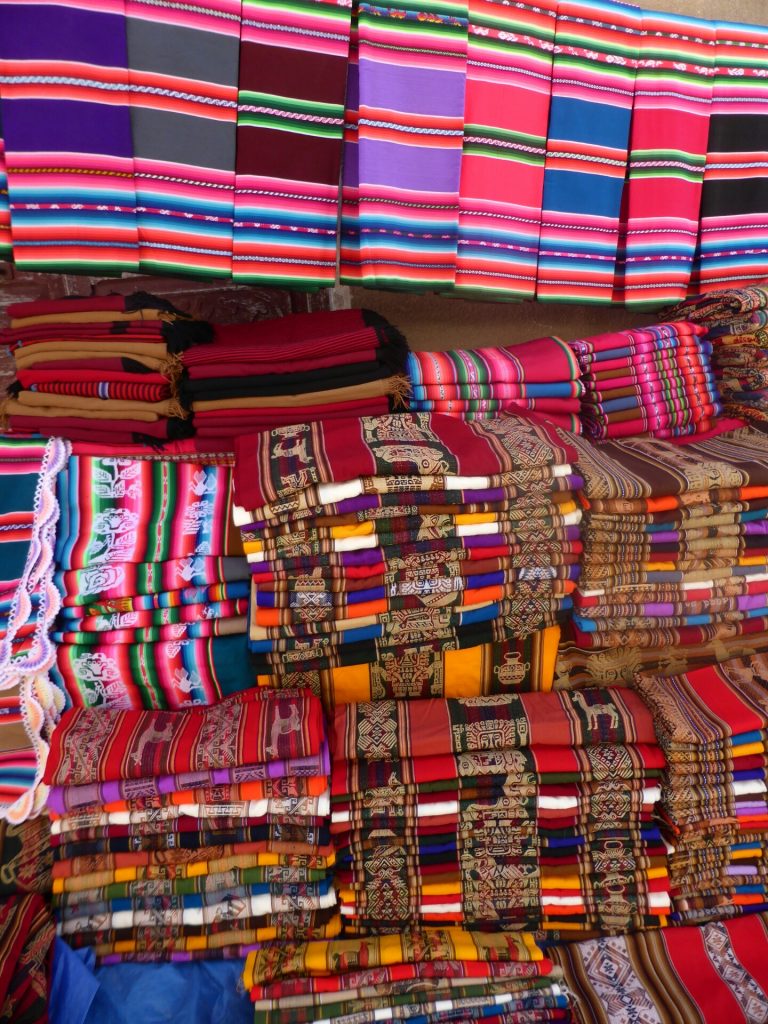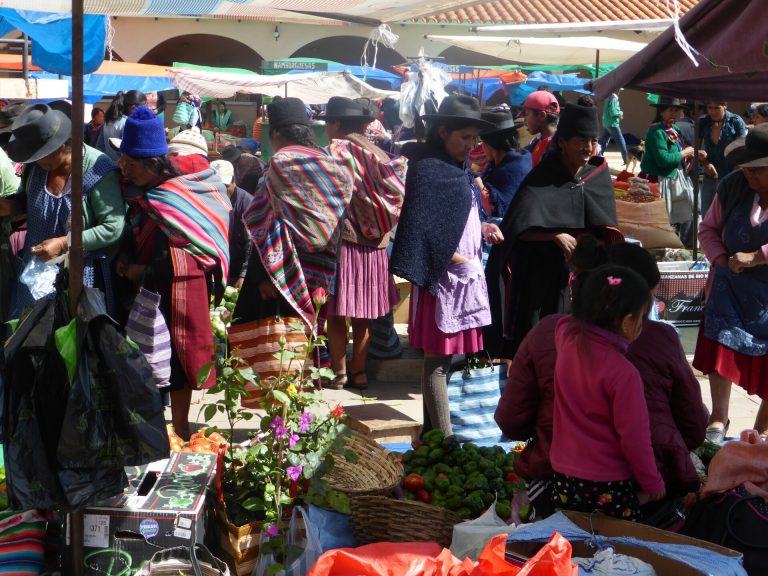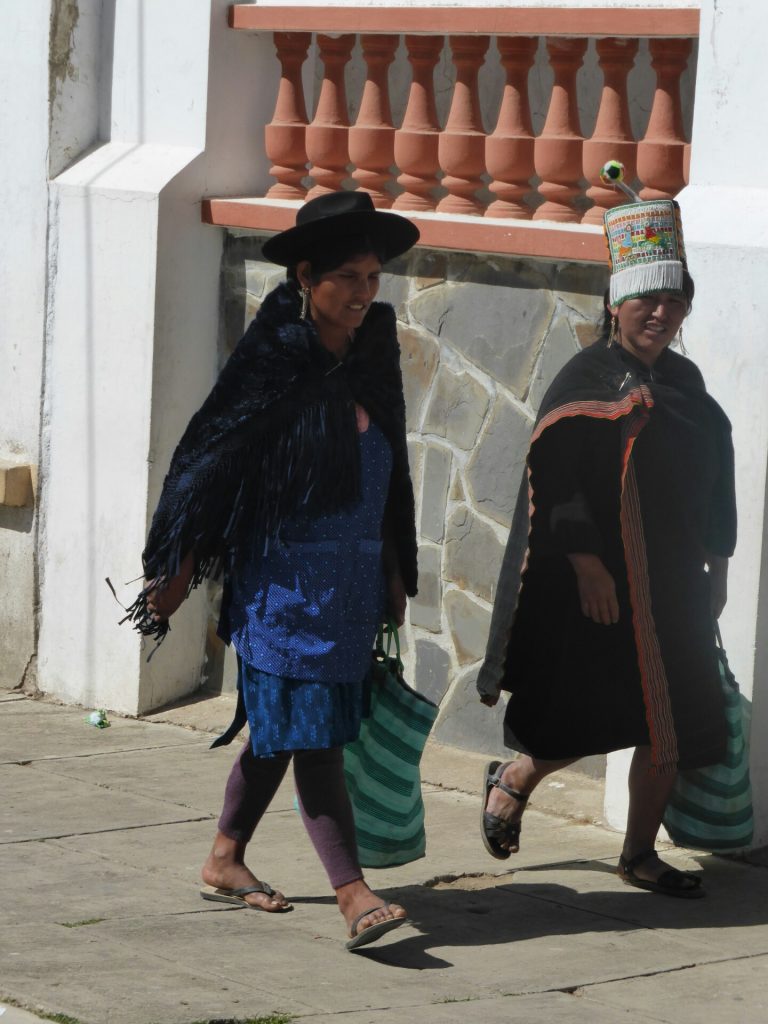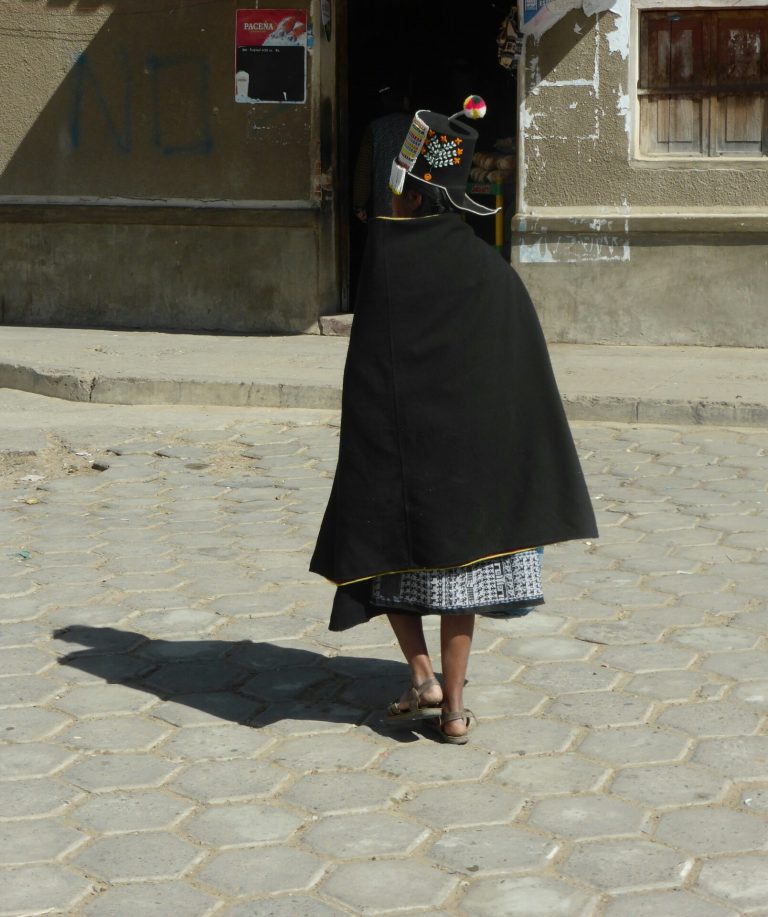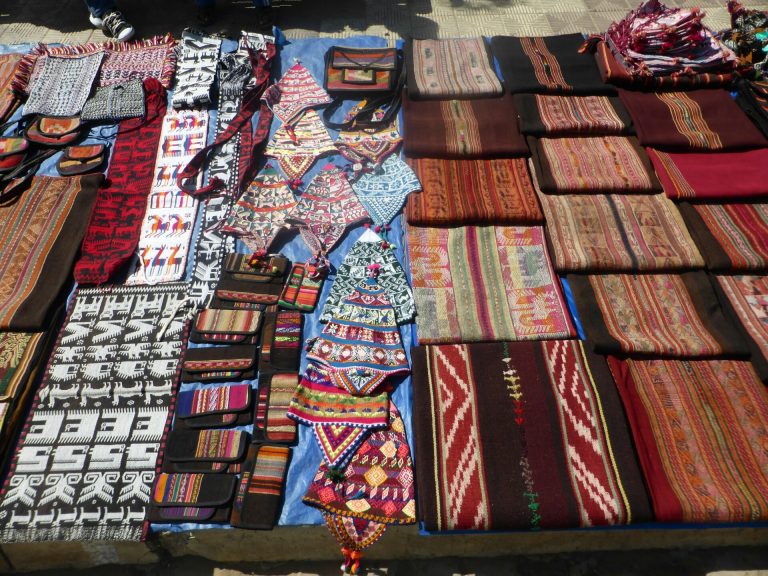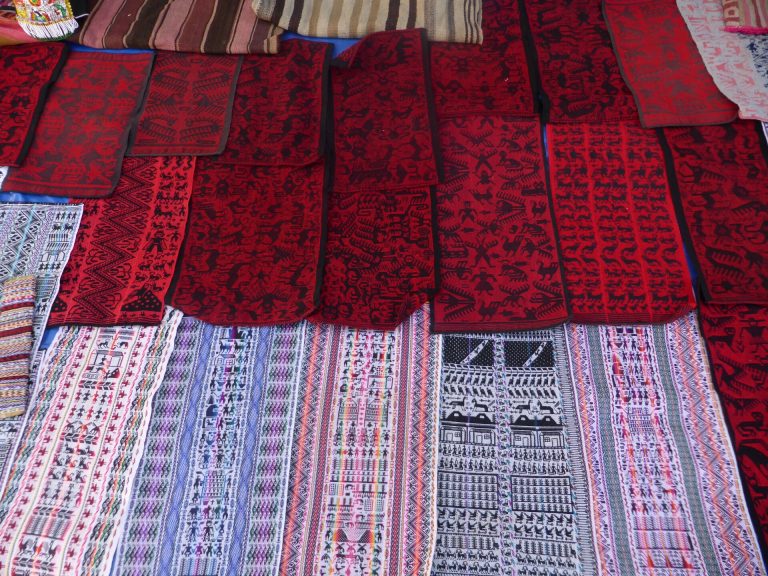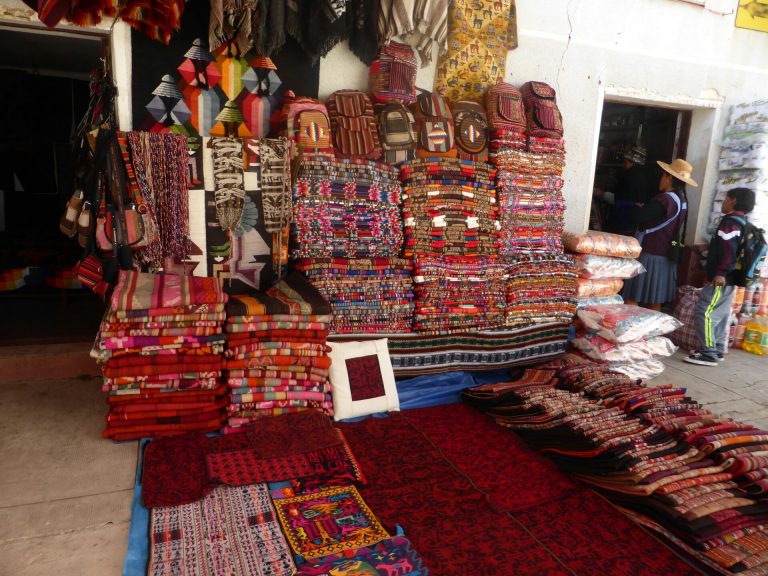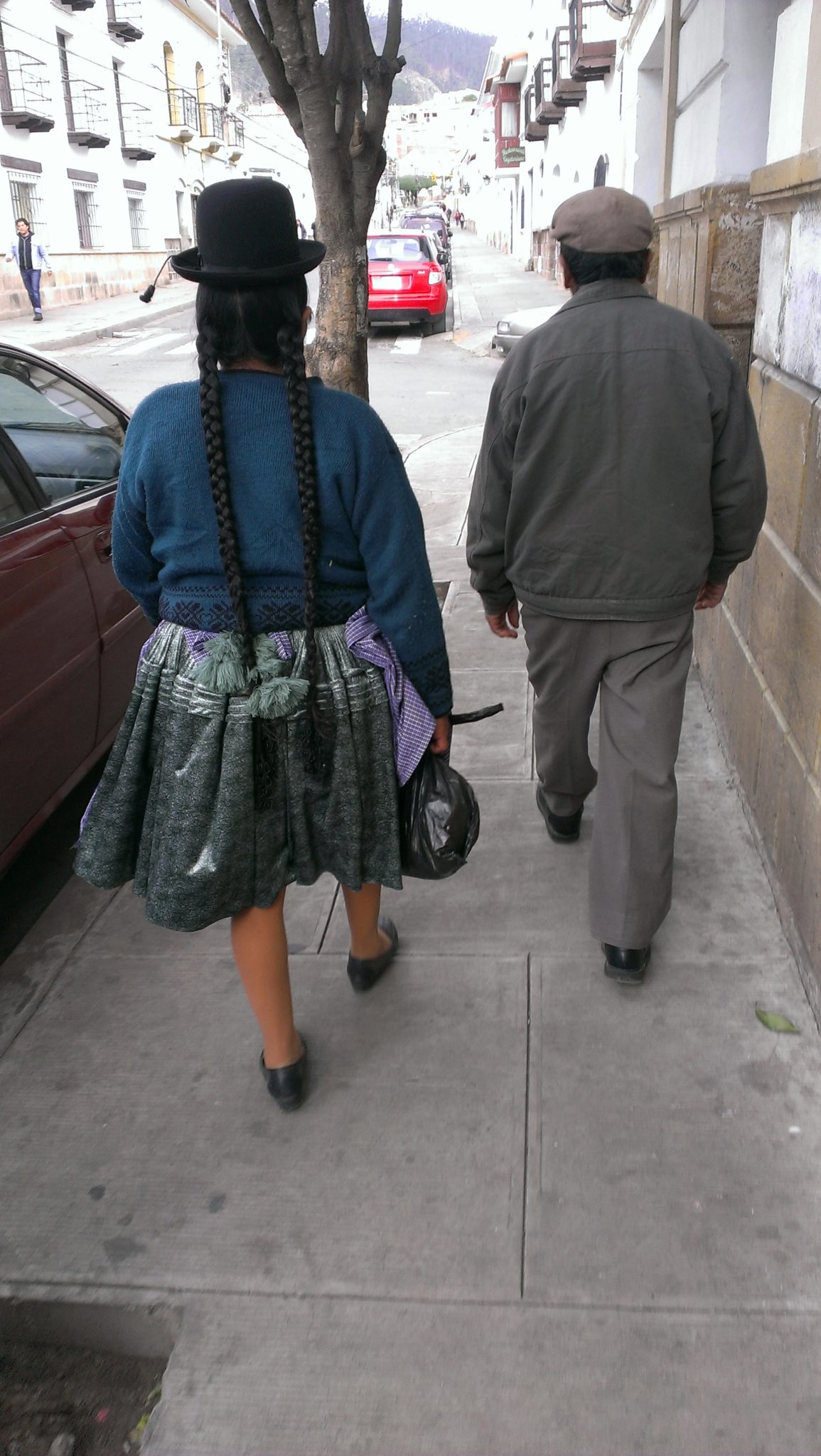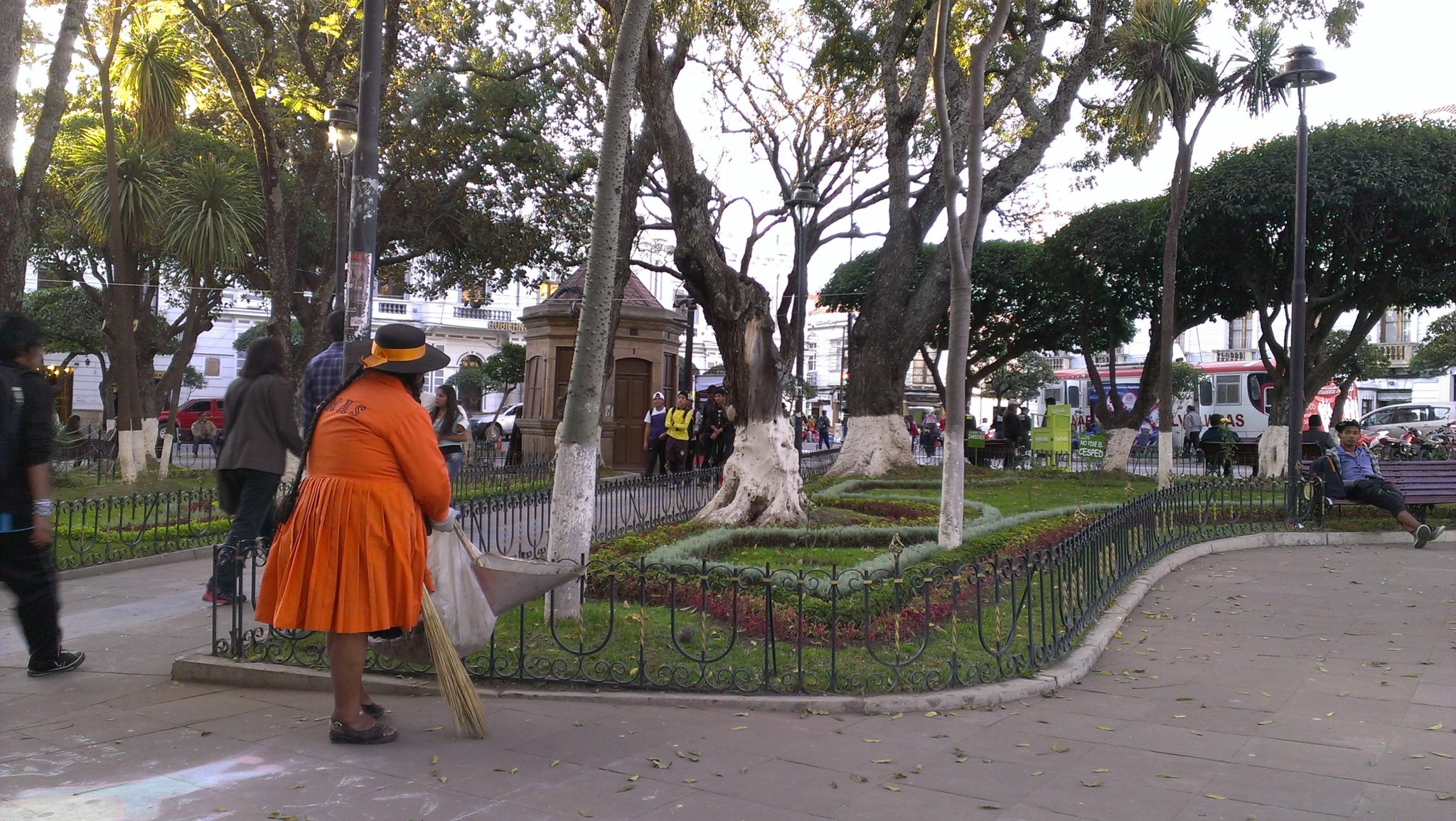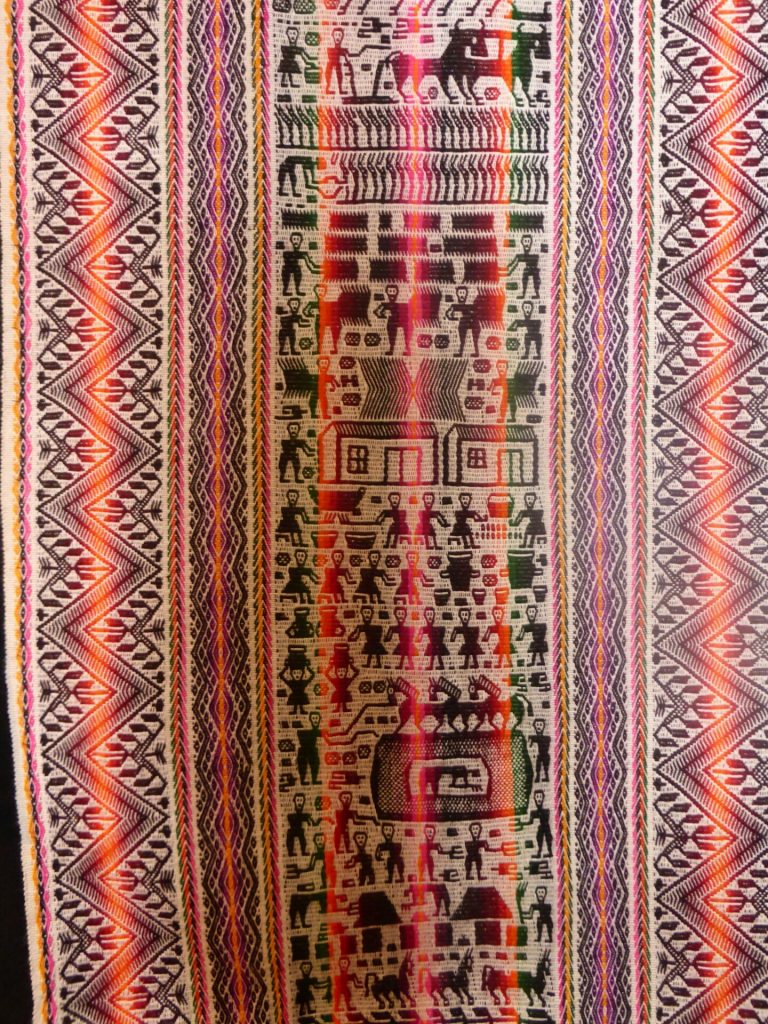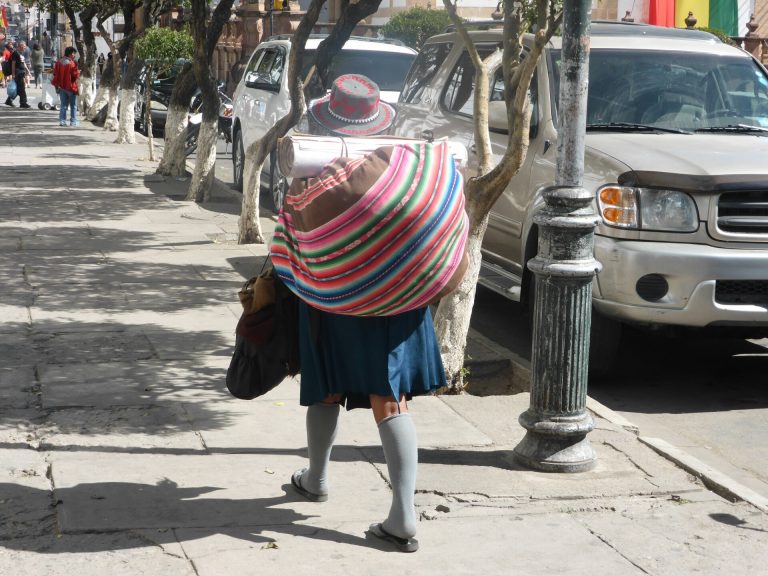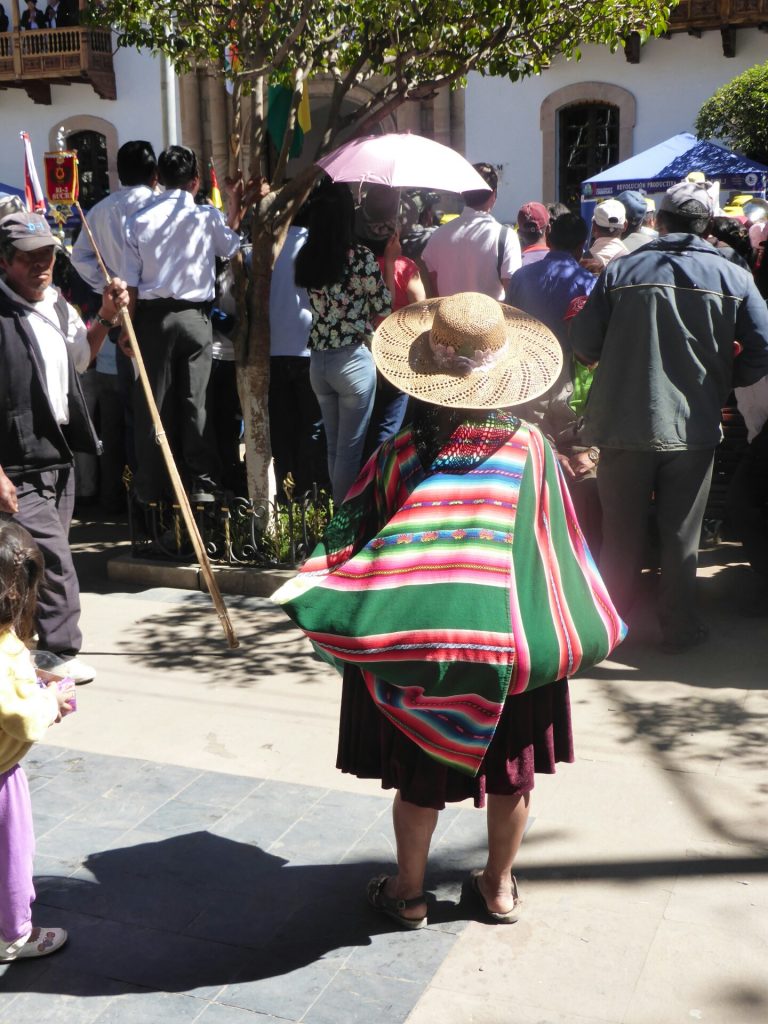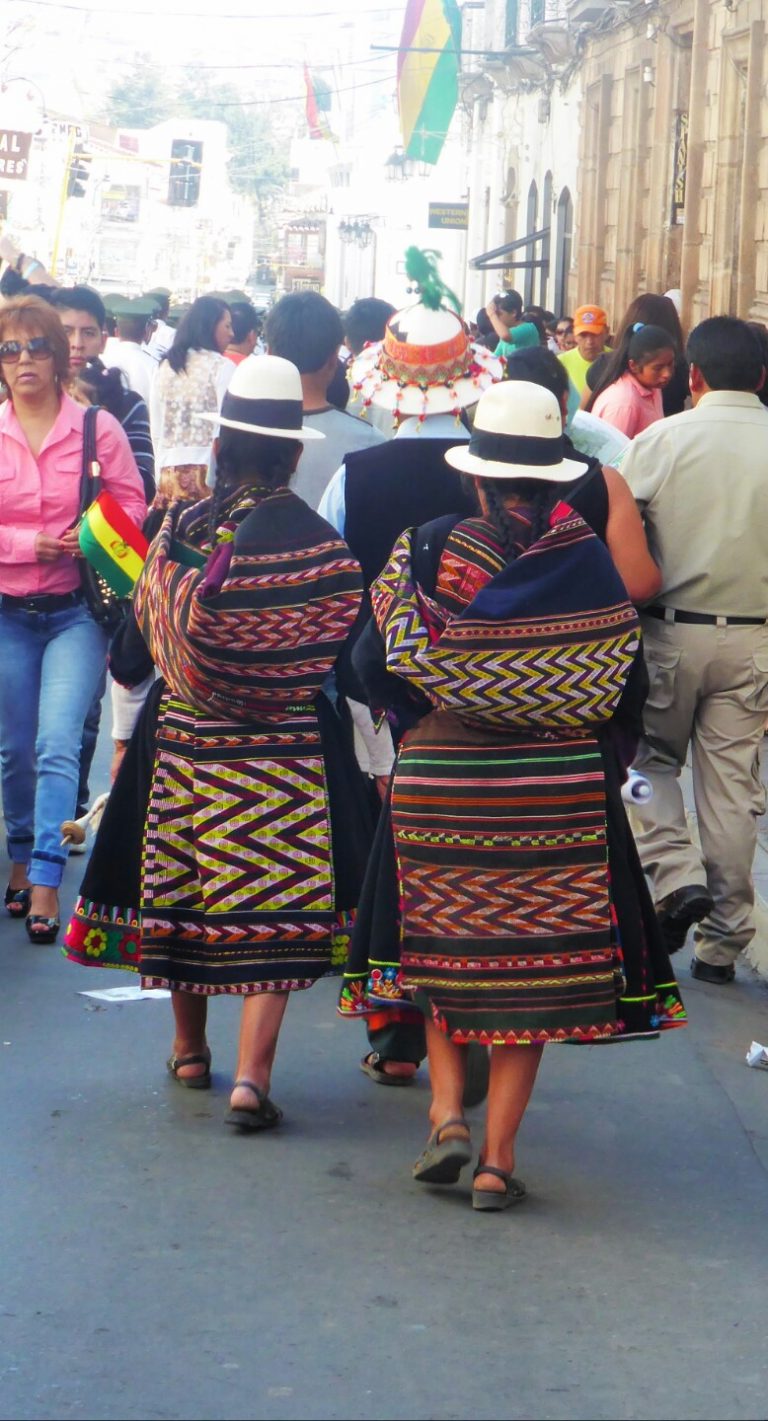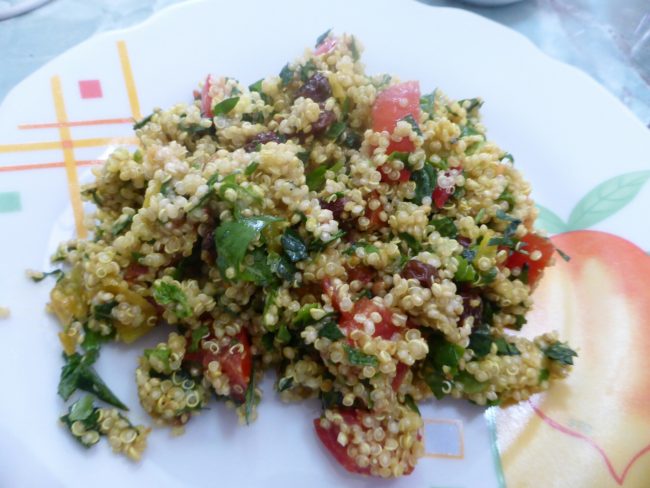"Marta, Marta comprame" (Marta, Marta buy)-a woman on a reet island tried to sell me all of her handmade treasures. Now I knew why she wanted to know my name when I entered the island....
Uros islands are floating reet islands with a very long tradition dating back to the Inca times (so they say). Nowadays there are few thousand people living on the tiny islands. Incredible construction and persistence to sell. The woman was running after me to try to make me buy her stuff thinking that I had one empty backpack for it and JD had a backpack full of money. To complete the circus to go to another island we needed to get on a cheesy reet boat "Made in China". At least there were actually people rowing it (I saw another one which was just pushed by a motor boat). And all of it tax free, Uros people don't have to pay taxes or have to buy a piece of the Lake that they use....
From Uros we went to see a traditional island called Amantani. Which had nothing special to offer but people for whom responding to "hola" was too difficult. We stayed there with a family who was pretending to speak Spanish responding every question I asked with an answer which was not even related. Obviously they tried to sell us their handmade hats and other shit right after dinner. In the evening they squeezed us into their traditional clothing (yep squeezed as I could barely breath) and took us for a party. It was so ridiculous that it ended up being fun.
On the next day the circus continued on the Taquile island which we saw in a documentary by the BBC. The chief of the village was saying that they work just like in Inca time, no money just community work and help for each other. Probably true because they have enough money from all the tourists that come to see this circus.
I wish I could say that Puno city was nice but it was quite ugly and definately without a soul.
At least we were not sad leaving it behind us to go to Cusco in hope the Inca capital would be a different world.
Tag: Travel
How much does it cost to travel in Bolivia? Our budget
After Argentina it definately feels like a relief that there are cheap countries in South America! And Bolivia is one of them.
During our 49 days in Bolivia we spend a total of 2329 euro which means that our budget per day was 23.76 euro per person. And that including Jandirk's really intense spanish course for a month:)
Where did we go?
We entered Bolivia from Argentina going first to Tupiza later on a 4-day tour to Uyuni. Afterwards we stayed for over a month in Sucre where Jandirk took an intense spanish course. Later we continued to La Paz and to Copacabana at the coast of famous Lake Titicaca.
How did we travel?
We travelled mostly by local buses which were very, very cheap. In total on buses we spent only 129 euro. They were not very comfortable as Bolivians have a different definition of full so they try to put as many kids and people as possible also when it means that you will have kids and adults in between your legs. But Bolivia is generally small and so the bus trips don't take that long and they are quite entertaining:)
Example: Bus from Sucre to La Paz was 80 bolivianos (around 10.40 euro) and it takes around 12 h, bus from La Paz to Tiwanaku was 15 bolivianos (around 1.95 euro) for 1.5 hour trip.
Where did we stay?
On accommodation we spend 583 euro spending 10 days in private rooms and the rest in dormitories. The differences in prices between the cities were not really that big (night in a dormitory was around 35-45 bolivianos per person so around 5-6 euros). In more rural area accomodation was even cheaper (on Isla del Sol we paid 25 bolivianos per person).
What did we eat?
We spend 652 euro on food, mainly cooking ourselves but we did eat out every now and then (definately more than in Argentina). We cooked a lot of quinoa and fresh vegetables and herbs, all of which are really cheap and easy to get on the local markets. We also didn't deny ourselfes local, extraordinary fruit.
We also went out for a few drinks, not too often and nothing extravagant.
Eating out: eating out is either cheap or super cheap. On Isla del Sol we ate a 2 course menu (soup and for main fish, rice and salade) for 25 bolivianos each (around 3.25 euro), in Sucre main course for dinner would be around 40-50 bolivianos (around 5.2-6.5 euro).
How expensive are museums, tours etc?
On tourism we spent 393 euro of which 344 euro was a 4-day excursion for us both to Salar de Uyuni, going through lagoons, mountains and hot springs. Entrance to Tiwanaku was 80 bolivianos per person (around 10.40 euro). Less known museums like textiles museums are around 22 bolivianos (around 2.86 euro)
How much does it cost to learn spanish in Bolivia?
Bolivia is definately one of the best countries to study spanish. Bolivians speak were clear and slow spanish and it's really cheap to take spanish lessons. Jandirk took an intense course (5 days per week, 4 hours per day) for a month for 363 euro.
An hour of spanish class: an hour of class starts with 25 bolivianos (around 3.25 euro) in local cafeterias and ends around 45 bolivianos (around 5.85 euro) for an hour in a school.
What else did we spend our bolivianitos on?
209 euro went for different kinds of medication as we were both a bit sick and I had an eye inflamation, we also washed our clothes a few times (around 9 bolivianos per kilo so around 1.17 euro). 520 bolivianos (around 67.61 euro) went for our new day pack.
P.S. Exchange rate used 1 EUR = 7.69 BOB
If you have any questions or you would like to take a look at our spreadsheet, let us know:)
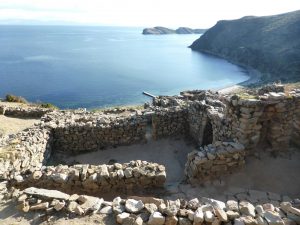
Mysterious Lake Titicaca
Going to Copacabana on the coast of Lake Titicaca we were expecting extraordinary ruins, ancient civilizations and beautiful views. What we got were tons of restaurants, propers, ugly buildings and ruins that were far from impressive. But at least climbing on the surrounding mountain provided us with a decent exercise and quite good views of the city.
But no-one goes to Copacabana for the city itself and neither did we. And so we took a boat to Isla de la Luna. On our way we were very focused to keep our heads out of the windows as the whole boat was filled with fumes from the motor of the boat. Possibly the sailor wanted to poison us. Anyway he didn't manage and we reached the island just fine (not counting our stops in order to try to sell more tickets). Time in Bolivia is very relative and so when we reached the island our captain didn't feel like waiting for 2 hours before going to the next one anymore. Kindly he gave us 45 minutes. Running through the tiny island we managed to see it's only monument Temple of the Virgins of the Sun. Magnificent ruins where years ago little girls of around 8 years old were brought to learn weaving, cooking and everything that would be necessary to became a concubine, wife or a sacrifice.
From over there we went to Isla del Sol without buying anything from local ladies which they were not so happy about. As soon as we entered Isla del Sol we had to pay an admission to be allowed to walk on that sacred ground (just like on Isla de la Luna and everywhere else where the Bolivians think they could possible charge for walking). On Isla del Sol we started our 16 km by climbing probably a million stairs, or at least that's how it felt. Escalinatas de Yumani which led us to Inca gardens was probably secretly built to slow all the armed Spaniards down...
The rest of our walk seemed rather easy even though we had to go through people's gardens in between their lamas and donkeys as we lost our way. Going to the north we passed a small village called Challa which by Lonely Planet is compared to Greece because of it's "white beaches". Now we know for sure that the person that wrote it was either never in Greece or never in Challa. But after 14 km we were very rewarded with a charming, small village of Challapampa in the North. Pretty little beaches seemed not to be ment for people as there were mainly pigs and sheep enoying their time. After leaving our sleeping bags and other unnecessary things we went a bit further to see where the sun was born according to the Incas. And we were stunned.... Chincana turned out to be one of the most impressive ruins we have seen so far. Huge with many rooms it showed us that the Incas really knew what's best... Fancy room with a view of course. View on the lake. Spectacular.... Now we are looking forward to what Peru has to show us:)
;
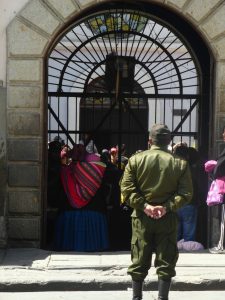
La Paz & Tiwanaku
On one side of the street we see a dead, dried little lama, next to it some lama fetuses and for a perfect combination there is also some wine and small, fake US dollars. Typical view at Mercado de Hechiceria in La Paz. All of those are offerings for Pachamama, Mother Earth. Nothing can succeed without her, not a single marriage, crops or bulding project. Rumors say that for a bigger construction she needs a human sacrifice and normally a homeless, alcohol or drug addict is chosen. Obviously he is not aware of the honour when being druged or given alcohol until unconscious.
And obviously it doesn't hurt to ask Jesus for his help, just to be on the safe side. It's amazing how Bolivia combines the Catholic religion with their own gods and beliefs...
Going further we see chaotic streets, people selling "open" guinea pigs on the pavement next to electronics and tiles for your bathroom. Strangely enough we enjoy looking at the choas, all the unfinished buildings, that normally would be considered slums, and all those people with less teeth, as some have been dissolved by liters of coca cola and fanta.
And than walking through the centre we are intrigued to see the number one attraction in town the San Pedro jail. It looks just like a school, kids and women going in and out. But it's as special as Bolivia. Prisoners need to pay for their cells, their families live with them (yep including kids) and cocaine is produced day and night. There are also other sorts of businesses, restaurants etc. There was one inmate who decided to organise guided tours for tourists and even for a bit more money you could sleep inside or try the "sugar" produced inside. (Un)fortunately the tours are not available anymore probably because they ended up being in Lonely Planet and there is a book written about this crazy place which is far from flattering (Marching Powder).
To try to clean our lungs from all the smog of the city we went for a trip to a small village Tiwanaku where pre-Incan ruins of a mysterious civilization are situated. They disappeared after over a thousand years of ruling the region at around 1200 AD. After seeing a BBC documentary about this Lost Kingdom we were expecting huge ruins. But I guess camera adds a few kilos or a few meters to everything. And so Tiwanaku was rather small but still really impressive and beautiful. The most incredible spot was a subterranean temple with scary stone faces on all the surrouding walls. I was shocked how all of the monoliths of a few tons were dragged to the site through Lake Titicaca on reed boots. Between all the ohs and ahs we needed to watch our steps as lamas poo on everything, monument or not....
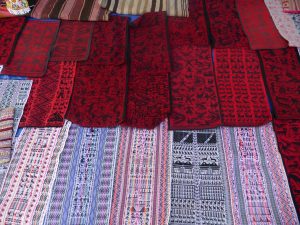
Textiles and fashion in Bolivia
Everywhere I heard crying kids but I saw none. "Look it's in the cloth" pointed Jandirk. And so it was a crying cloth and not just one but multiple. And so we realised that Bolivian women just carry their kids in beautiful, colorful sheets on their back mostly without oxygen access. "They cry so they can breath" said always calm Jandirk. That was the first thing we noticed and straight afterwards we noticed long, long, braided hair, all exactly the same length, style and always two, always in the back, sometimes joined with a black wool pocacha. Except for that the ladies wear a variety of colorful pleated skirts, polleras. Brought here by the Spaniards they were forced on the indigenous people, now they are a symbol of a proud indigenous women. To complete the outfit all of them wear practical aprons with pockets and hats. All of the elements change depending on the occasion, wealth, region and simple own taste:) so it's a lively theatre of colours, patterns and different kinds of materials used.
Textiles are definitely the most impressive part of the Bolivian culture. Used as coca bags, table cloths, caps, skirts or just wall art, the most typical ones are still handmade with an extraordinary method pallay which hasn't changed in years and involves a wooden frame, wooden sticks, animal bones as tools and a crazy amount of woolen strings. On the Sunday market in Tarabuco (village famous for it's textiles) we found out a process of 3 months is required to get one medium size textile. And that's by a skilled person obviously. All of the ladies were also very enthusiastic when telling the stories of how the textiles represent everyday life in the village like celebrations, chicha (corn beer) preparation, harvesting or typical legends or, children tales told generation to generation. And they also understood when I complained how my husband Jandirk has all our money and how he forbids me spending any of it. Poor life of a wife, even European one:)
After the market we packed ourselves into a local micro bus. Literally packed beacuse Bolivian buses leave when they are full, full Bolivian style. So if a tiny lady or a kid can fit in between your legs, it is gonna be there. And so we travelled with kids and people on the floor and between the sits. A Bolivian girl sitting next to me was showing me effective sleeping poses, which I couldn't apply just because of my slightly bigger size. She started laughing at my efforts. And we started talking about life, family, what we do in life etc. She was a map seller but probably she didn't look at the maps that much as she didn't know where Poland was. "beautiful hat! Is it from here?" I asked her as an introduction to an interview about typical Bolivian hats. "You want to buy it? I can sell you. There are plenty on the market". I didn't want to buy neither the hat nor the map. But I used the husband excuse. And after a few more questions and another lady joining in the conversation I found out that for example ladies from the La Paz region wear bombín that look like an English gentleman bowler, Chuquisaca region (so around Sucre) they wear more of a cowboy style hats and Tarabuco (village famous for it's textiles) wear indescribable pieces of art. Same counts for the "babe/groceries cape", the most popular are colourful, cheap, China made ones but there are also women (like in Tarabuco) that wear black, handmade pieces with a pattern in the middle.
Visiting local museums and fair trade shops I found out that weavings from Tarabuco are often symetric and mostly show real life scenes in many different colours although funeral scenes are mostly presented in blue, green or purple. Potolo, another village close to Sucre, is more famous for their black-and-red less realistic, scary designs. All absolutely stunningly beautiful. Other regions are still yet to be discovered for us. Too bad the prices of all are less of a Bolivian standard so less accessible for us "poor" backpackers. But we at least get rich in pictures:)))
Quinoa salad
Quinoa is a native grain to the Andean communities. It has always taken a great part in the their culture, and even still today it's used in the rituals and ceremonies of the local communities. It was considered sacred by the Inca and forbidden by the Spaniards. Nowadays Bolivia and Peru are the biggest producers of quinoa, on a huge scale as it became a popular "superfood" all over the world.
Quinoa can be used in a salad, risotto, pudding, melted in a delicious bar of chocolate or just as popcorn.
Here is our recipe for a nice quinoa salad:)
Ingredients for 2:
- 200g of quinoa
- a hand full of mint
- a hand full of flat leaf coriander
- 20g of raisins
- 1 medium sized avocado
- 2 tbsp of ras el hanout (north african spice mix)
- 1 big union
- juice of 1 lime
- 7 cherry tomatoes
- 1 tsp of honey
- oil
- salt and pepper, to taste
Recipe for Ras el hanout:
- 2½ tbsp cumin seeds
- 2 tbsp coriander seeds
- 1 tbsp ground cinnamon or 1 cinnamon stick
- 2 tsp ground ginger
- 2 tsp black peppercorns
- 1 tsp ground turmeric
- ½ tsp ground cardamom or the seeds of 10 pods
- a good pinch of saffron (optional)
Grind all of the ingredients in a mortar and pestle and you're done.
Recipe for the salad:
- Cut the union in half rings
- heat up some oil in a frying pan and add the ras el hanout, keep frying until fragrant
- add the union to the frying pan, lower the heat
- add a pinch of salt and the honey
- keep frying for 30 min until golden and don't forget to stir occasionally
- cook the quinoa according to what the package is saying (al dente)
- cut the tomatoes into quarters
- take off all the leaves from the mint and cut them very finely
- do the same for the coriander (you can also use the stalks)
- cut the avocado in cubes and sprinkle a little bit of the lime juice over it so it doesn't go brown
- add the cooked unions and quinoa to a bowl and add the rest of the cut ingredients including the raisins
- add the lime juice and salt and pepper to taste and mix
Bon Appétit
P.S. Instead of raisins you can use dried cranberries, figs or even dates.
